Sunrise Over Nanda Devi
For the mountain-lovers of the world, the Nepal Himalayas tend to steal the show. For legitimate reasons. The region is home to eight of the ten highest peaks in the world and they're nothing short of awe-inspiring. However, the Himalayas span an additional four countries, India, China, Bhutan, and Pakistan, and looking at satellite imagery of this range reveals a world of infinite possibility--several lifetimes worth of exploration and trekking.
I knew that I wanted to round out my experience of India’s hectic cities with something serene yet active. As a mountain and nature enthusiast who has trekked in Nepal and Tibet, I decided that I would head north to the Uttarakhand state and see what India’s Himalayas had in store. Uttarakhand lies directly west of Nepal and peers onto its mountain ranges. It is divided into two provinces: Garwhal in the west and Kumaon in the east. Uttarakhand is known as the “Land of the Gods” due in part to the presence of the mountains, the place where many Hindu gods are believed to reside. It is home to the highest peak in India, Nanda Devi (25, 643 feet), named after the wife of Lord Shiva.
The Kuari Pass Trek was a perfect fit. At 8 days, it was the right length to tack on to my time in southern India. Although I was desperate to do a high elevation trek to get closer to the mountains, it being late in the season forced the trip to lower elevations, which wound up being an incredibly special time to witness the turning of color in the leaves and grass and seeing the local villagers prepare for winter. I convinced my father, Clinton, to come along at the last minute. Although he has never trekked before and hadn’t slept in a tent in about 40 years, he wound up outpacing his trail-running, trek-weathered daughter every day.
These photos will take you through my experience in Uttarakhand, on a route where we did not see another tourist or trekker for a full week, walking through villages, rhododendron forests, up and over peaks, eating curry, and watching the sunrise break over 25,000' peaks.
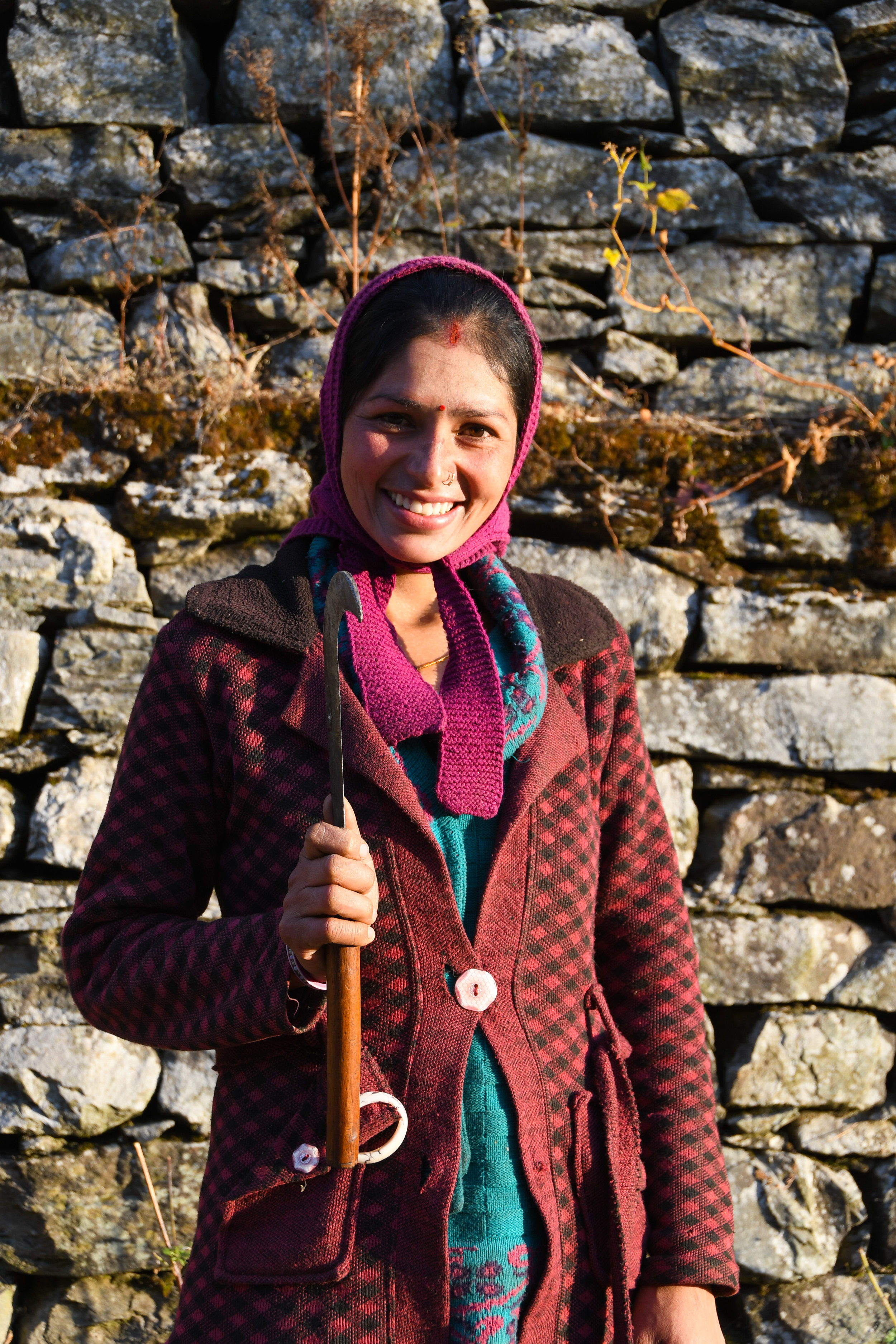
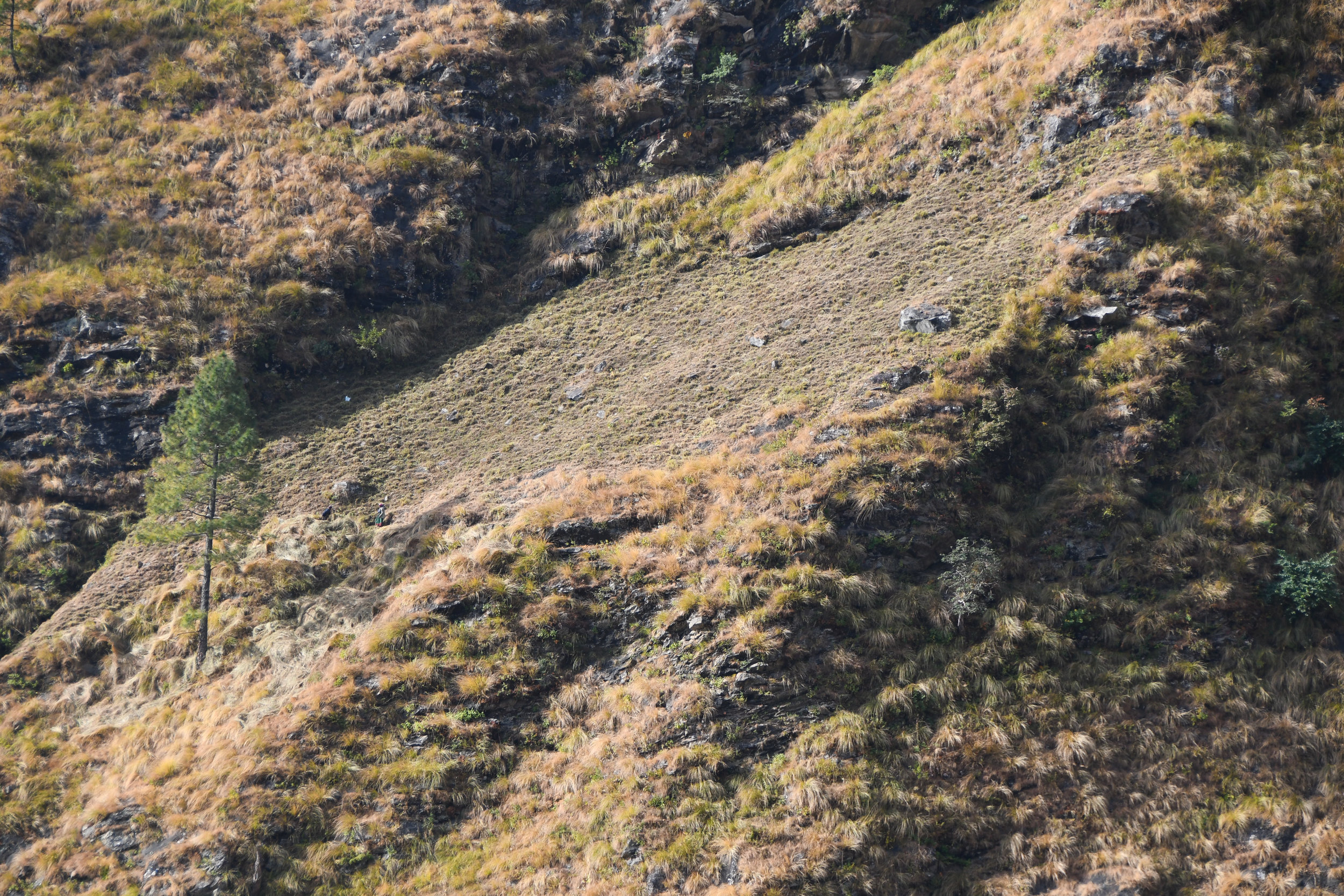
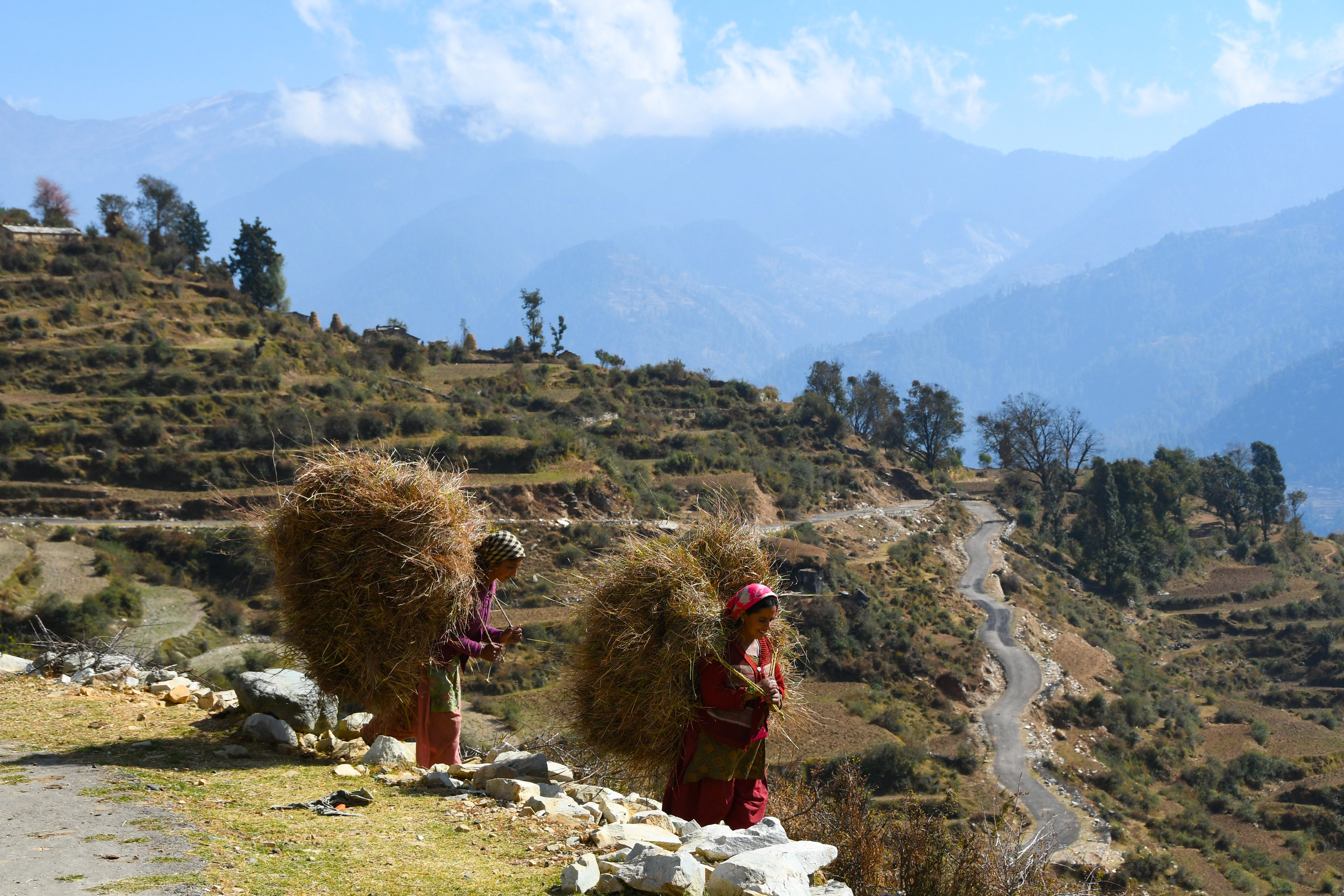
The first village that we walked through, the night before we started trekking, gave us our first introduction to local culture. During the autumn families are hard at work preparing for winter. The women scale steep mountainsides with their scythes, tie up the cut grass in neat bundles, and carry unfathomable quantities of it on their backs up or down hundreds, even thousands, of feet of elevation. The grass is then used to feed cattle and insulate their homes. In the above picture you can see the clearing of one hillside, and if you zoom, you’ll be able to see a couple of people at work.
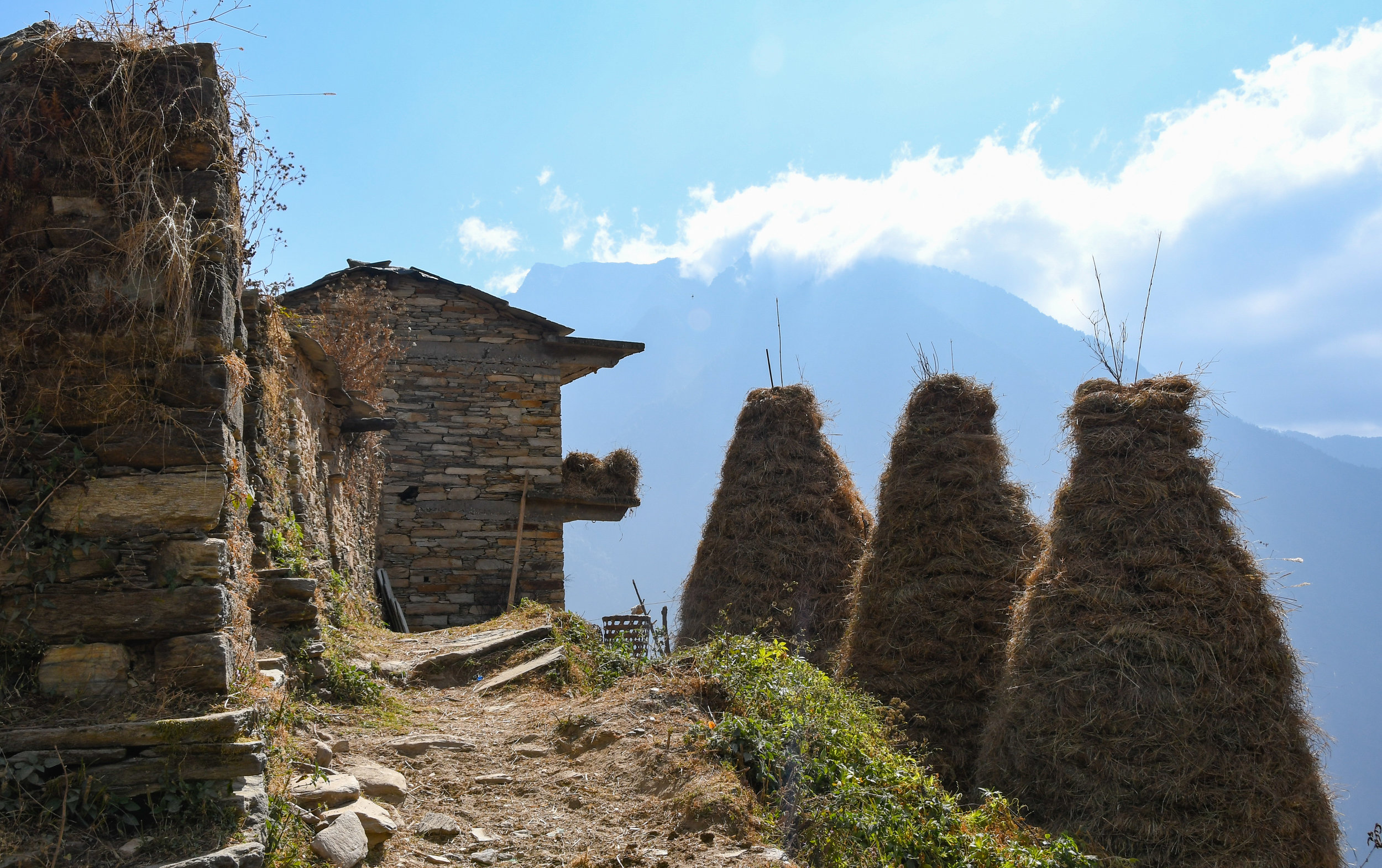
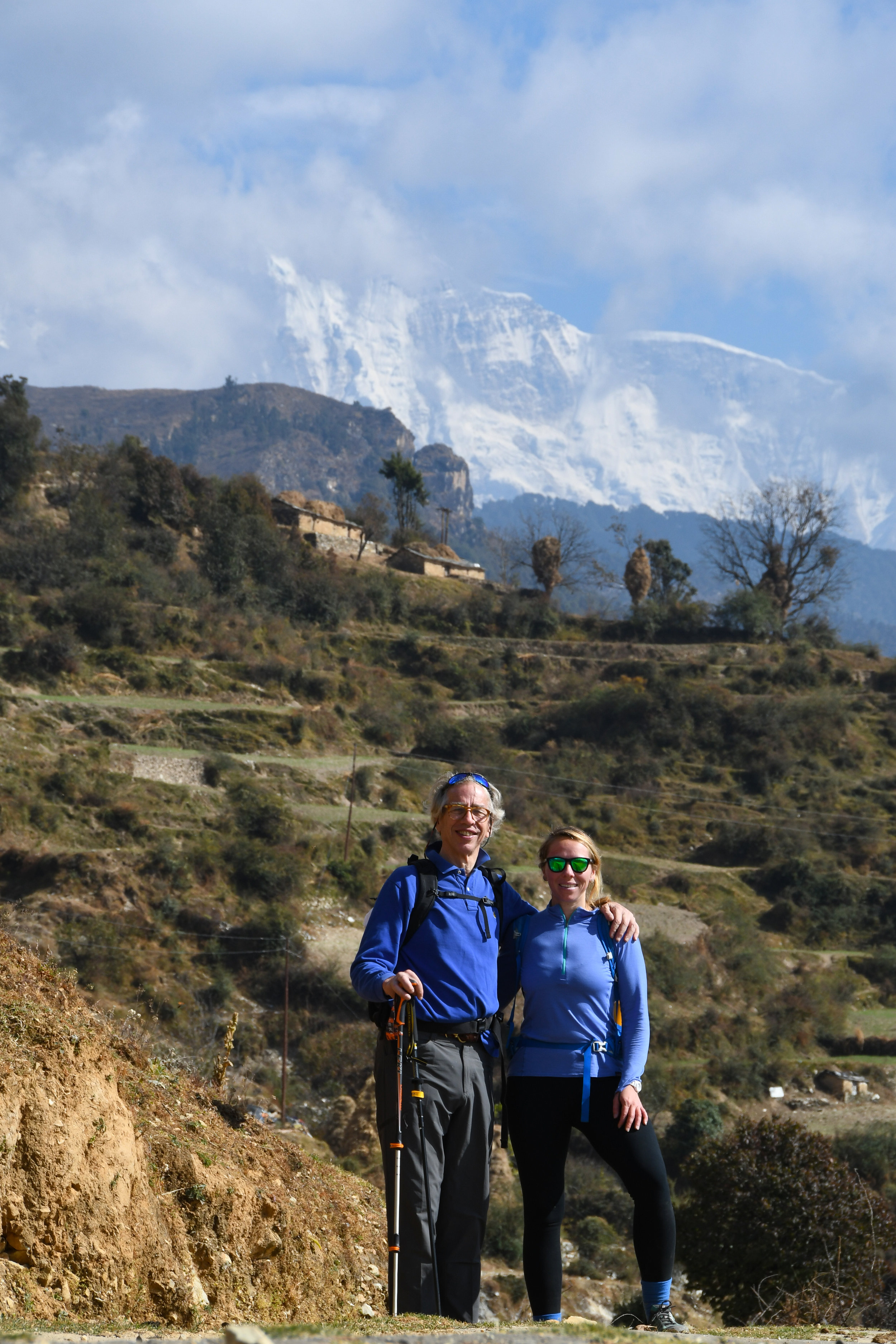
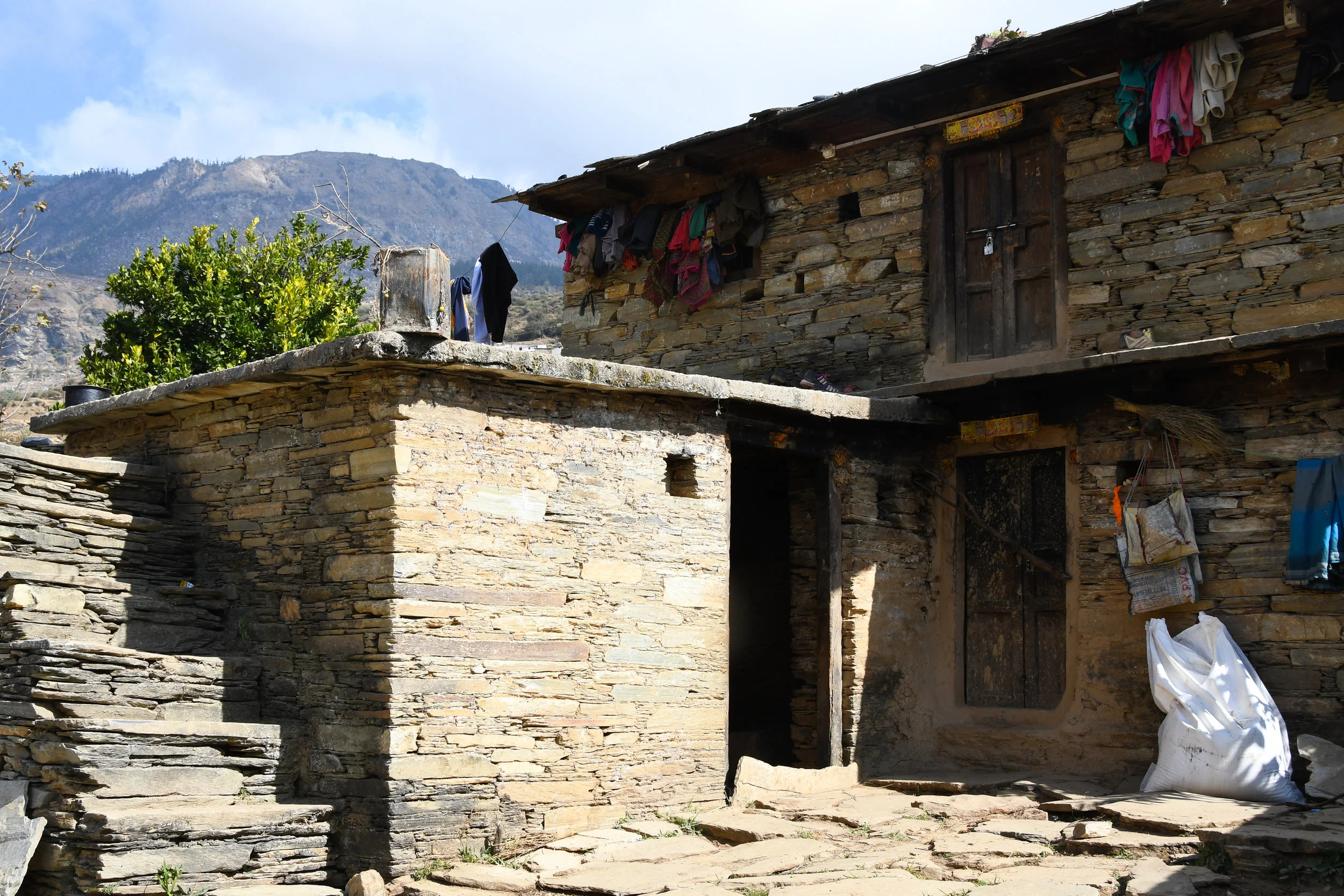
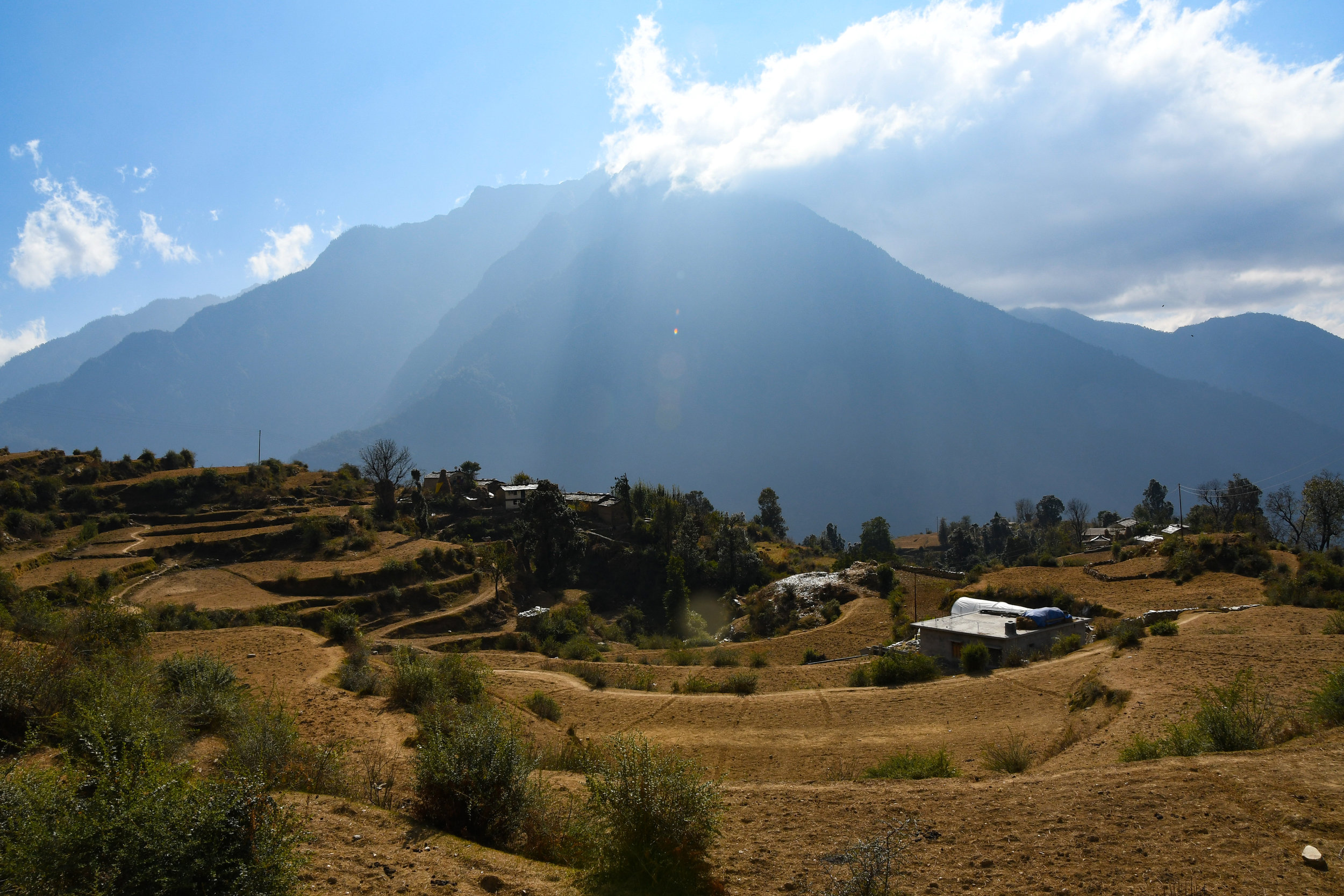
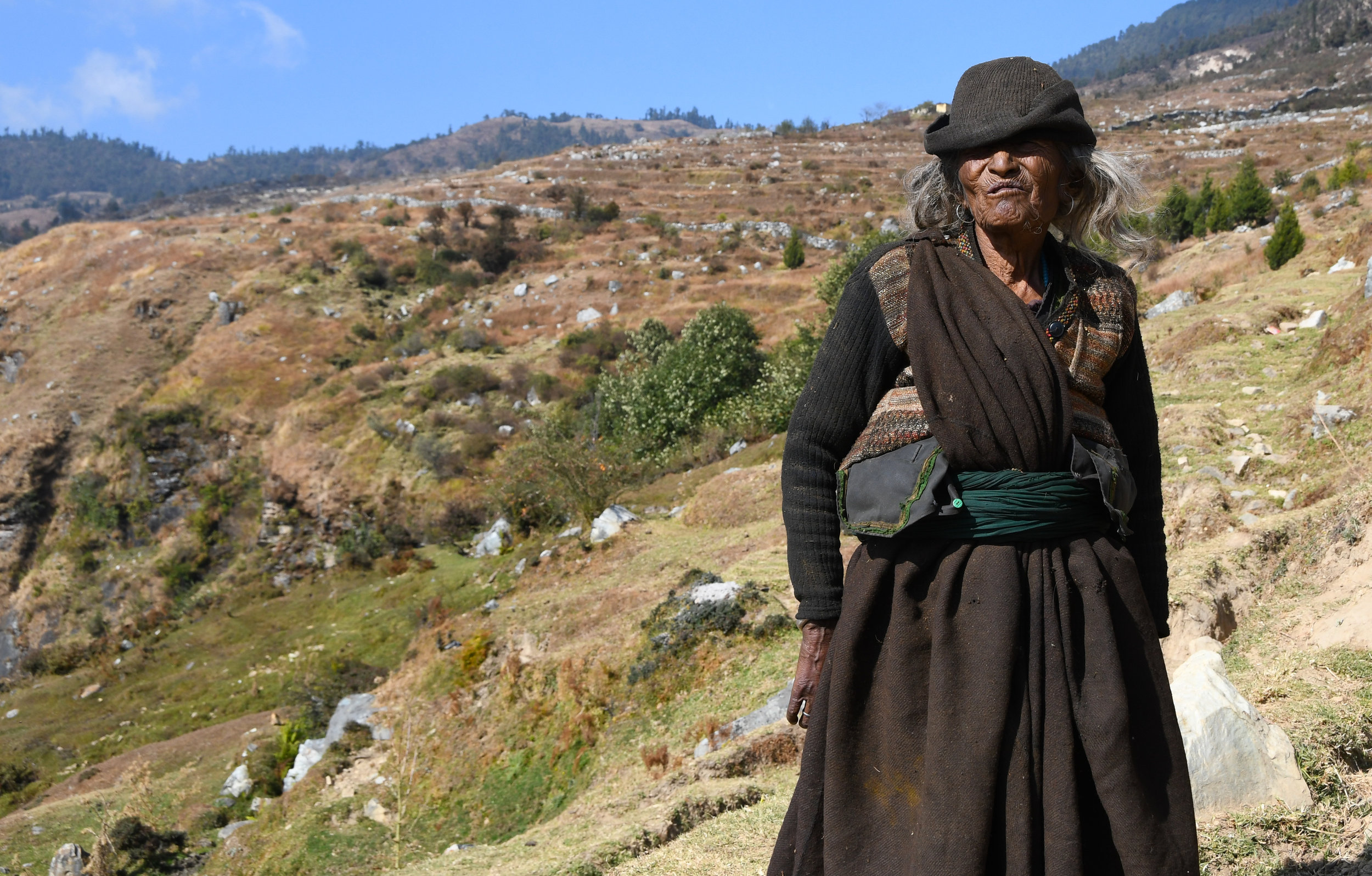
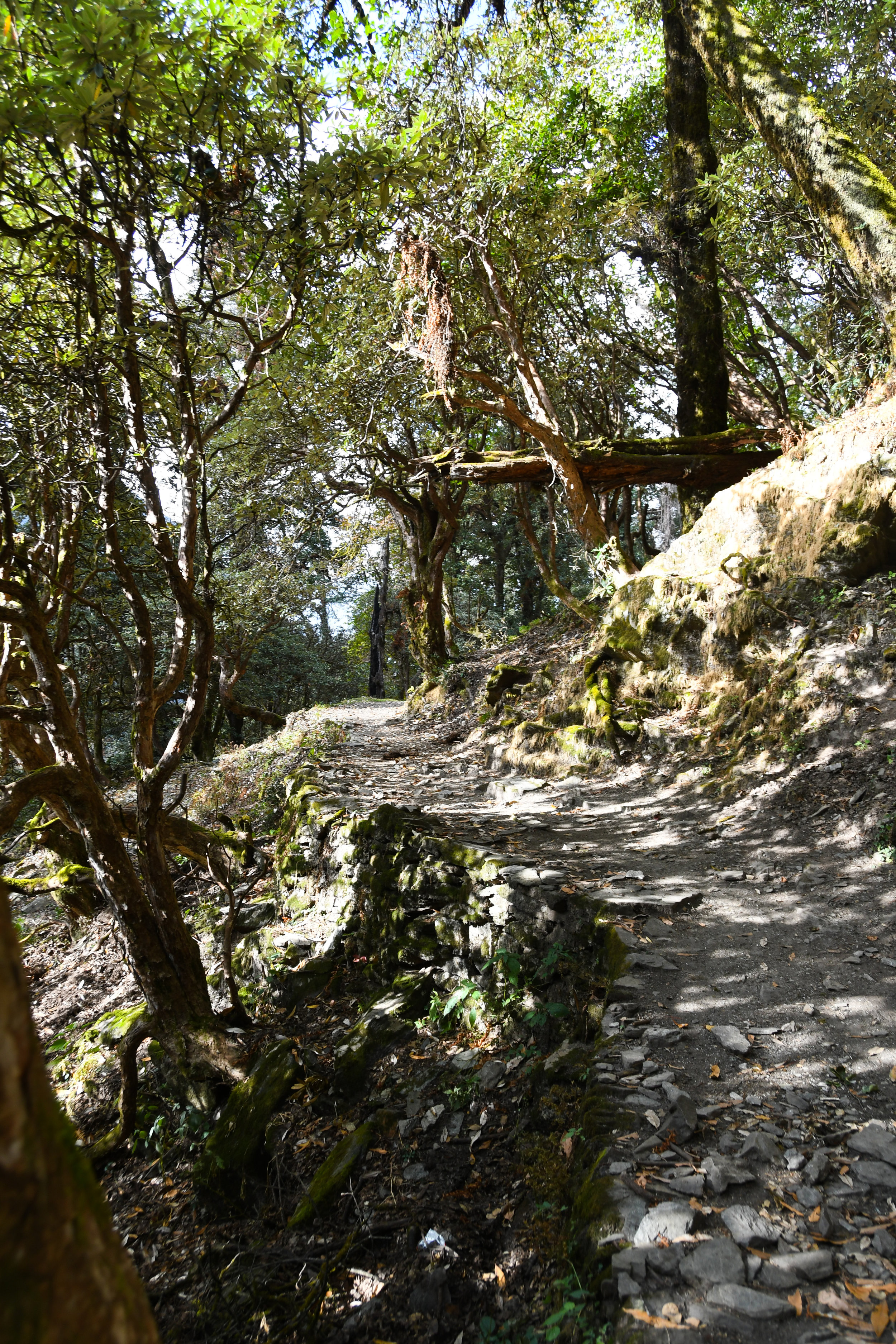
The first day of the trek gives you a taste of what the rest of it will be like: uphill. Although this is meant to be a “moderate” trek, my Dad and I realized this was “Himalaya moderate,” a different kind of moderate than a New Yorker and San Franciscan are used to. Happily, your attention is constantly grabbed by your surroundings. The terraced fields, the women in beautiful dress, men huddled around playing games, oh and the occasional 24,000-foot snowcapped peak popping out of the clouds. We felt so incredibly lucky to see the peak above, Trisul (Trisul translates as Shiva’s trident that you will see in his hand in Hindu iconography) on our first day, the feeling of elation lightening our steps. One of my favorite visuals of the area were the massive stacks of grass that were all over the terraces–and often times on top of the homes or stuffed into trees – they were a constant visual in the region. It’s a way of stowing the grass so it insulates itself, staying dry and avoiding rot. They looked as if they would shuffle around the terrace at night just to see if anyone would notice.
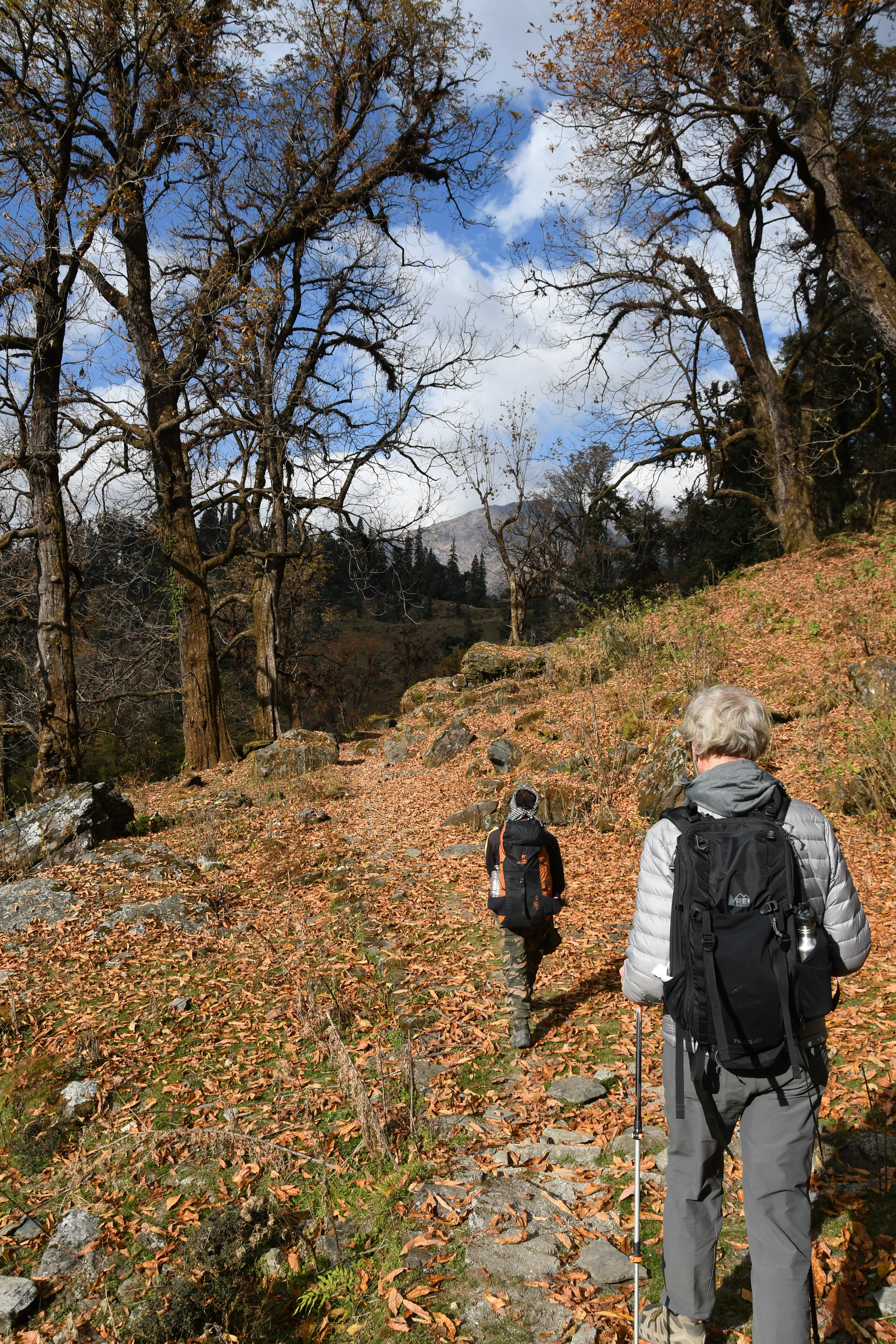
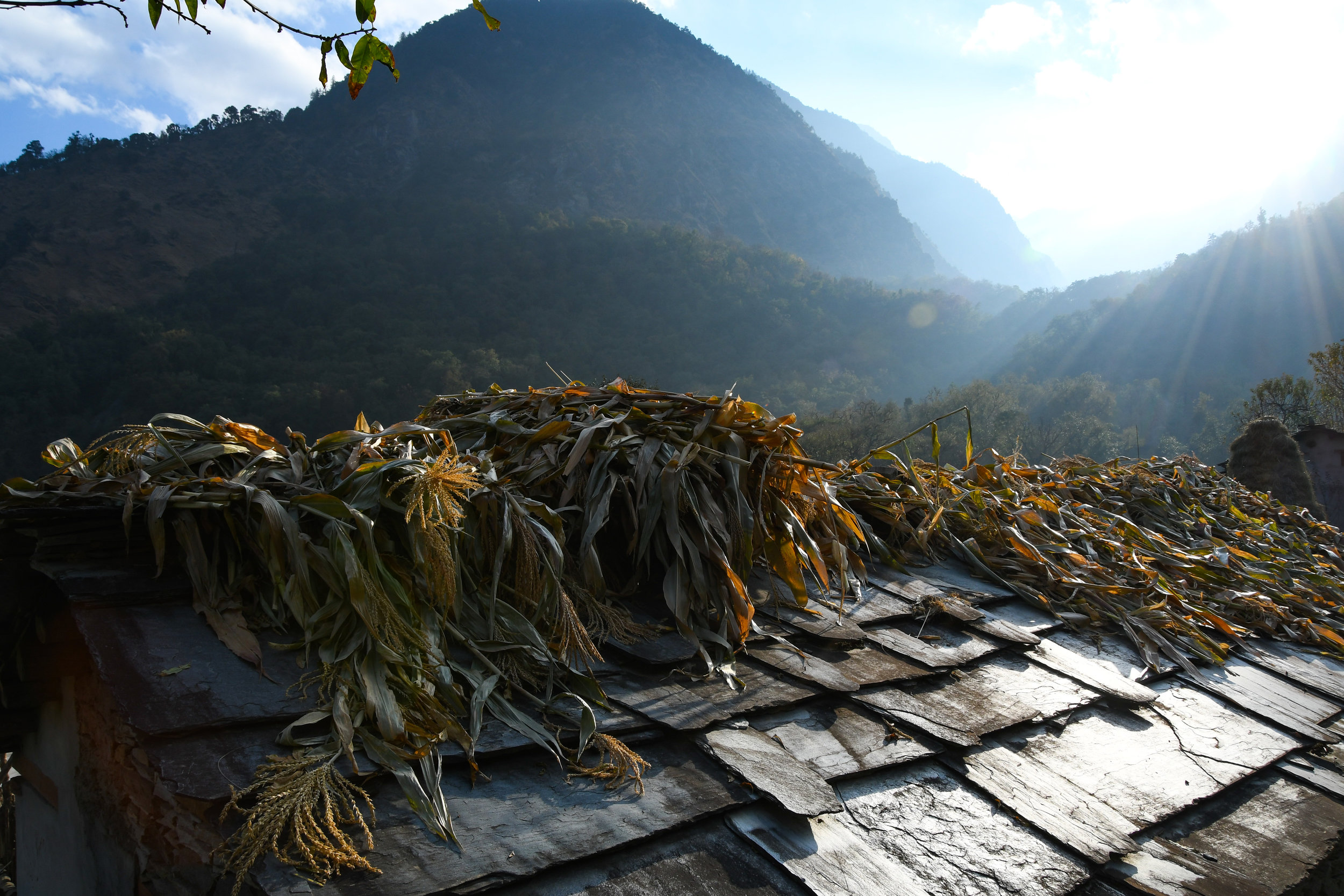
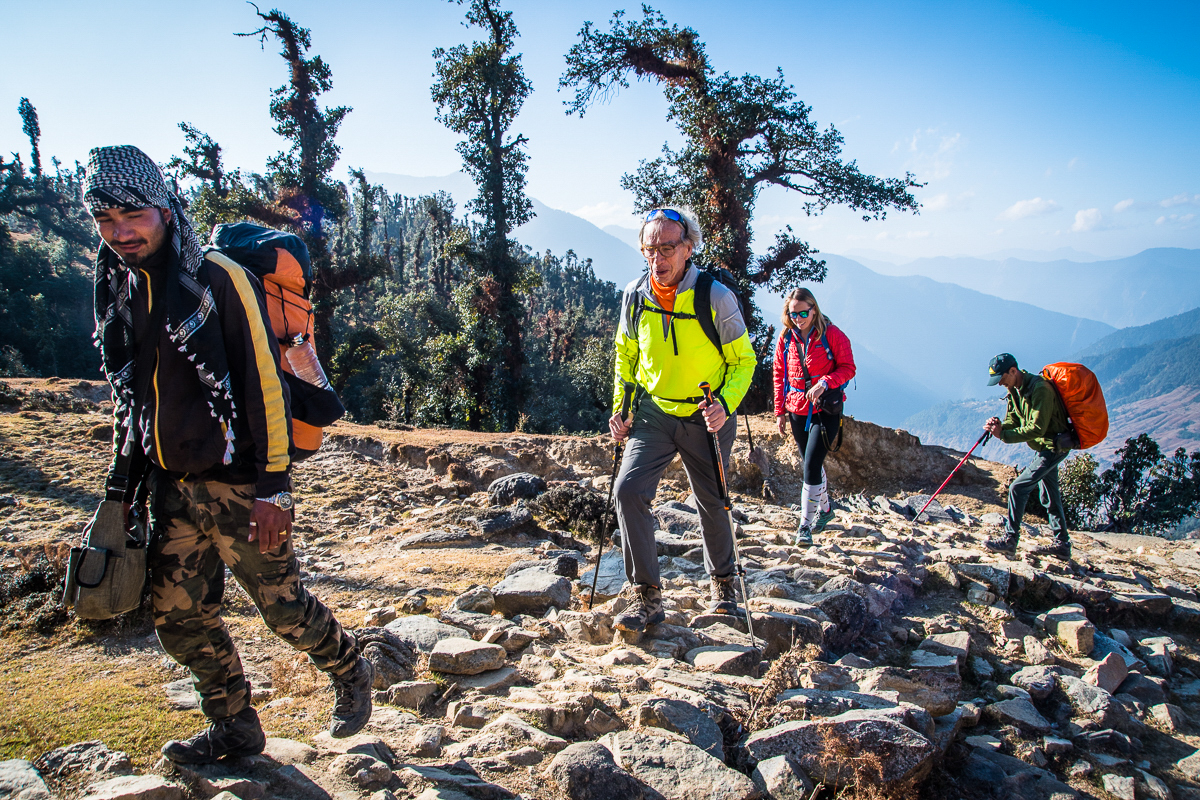

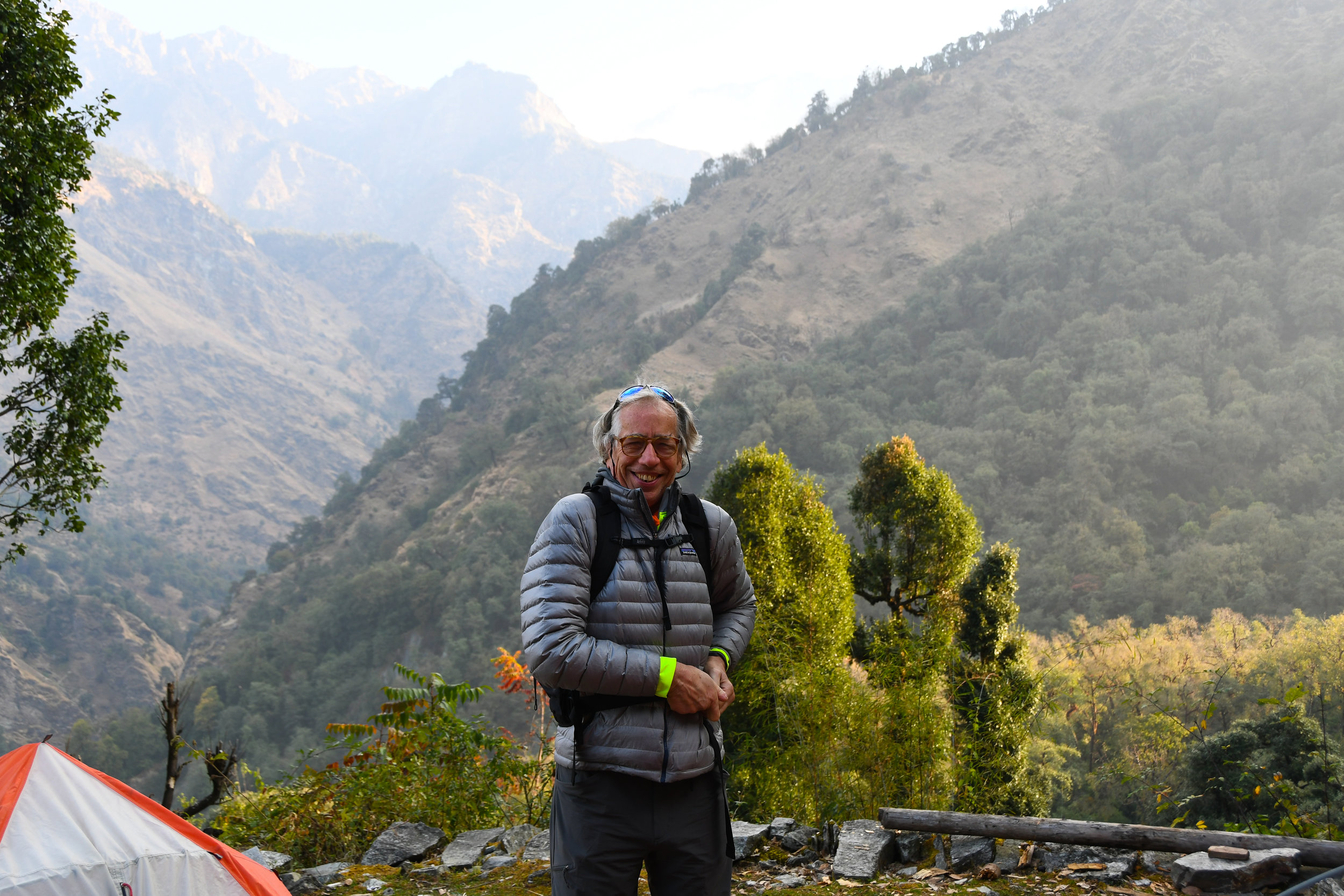
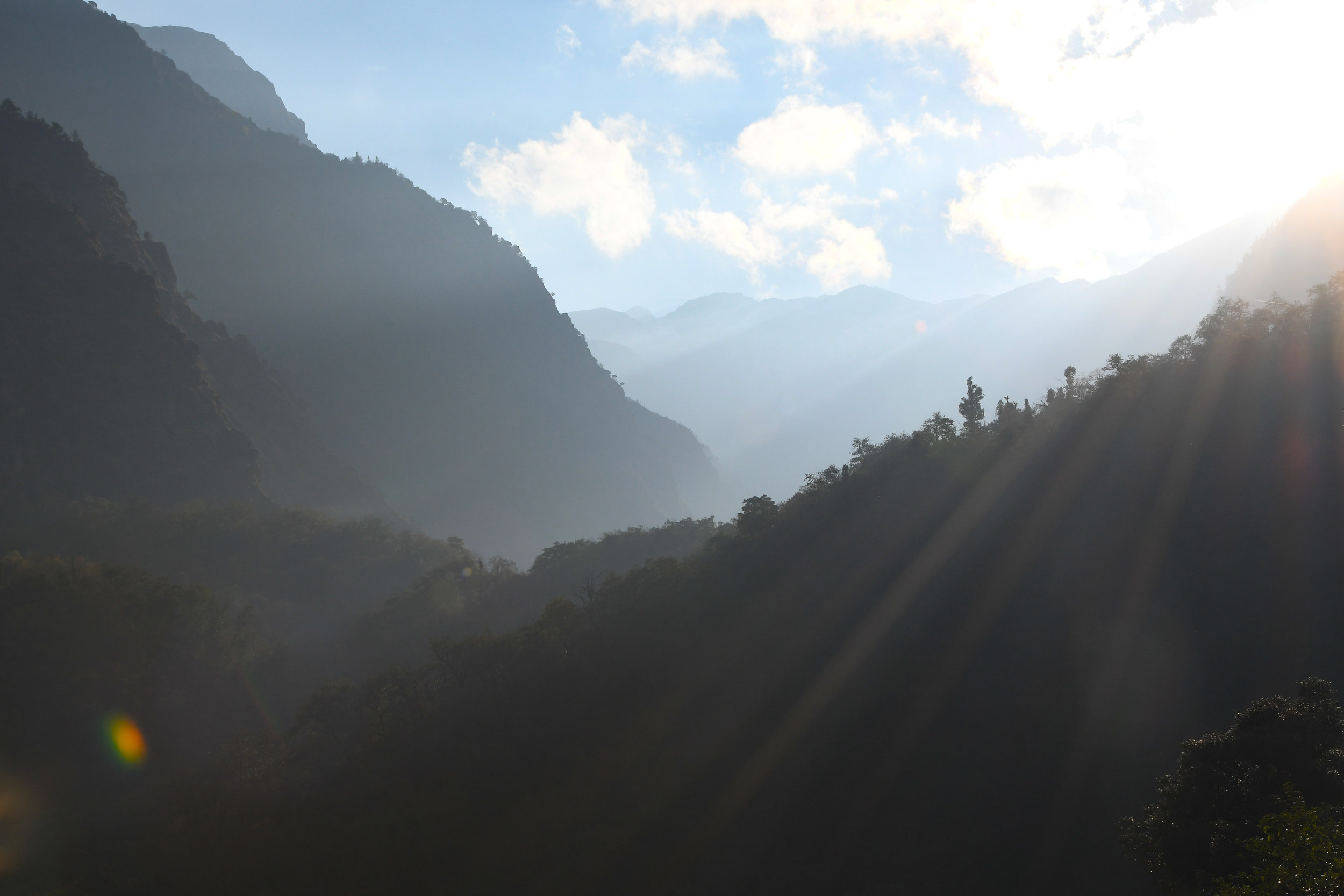
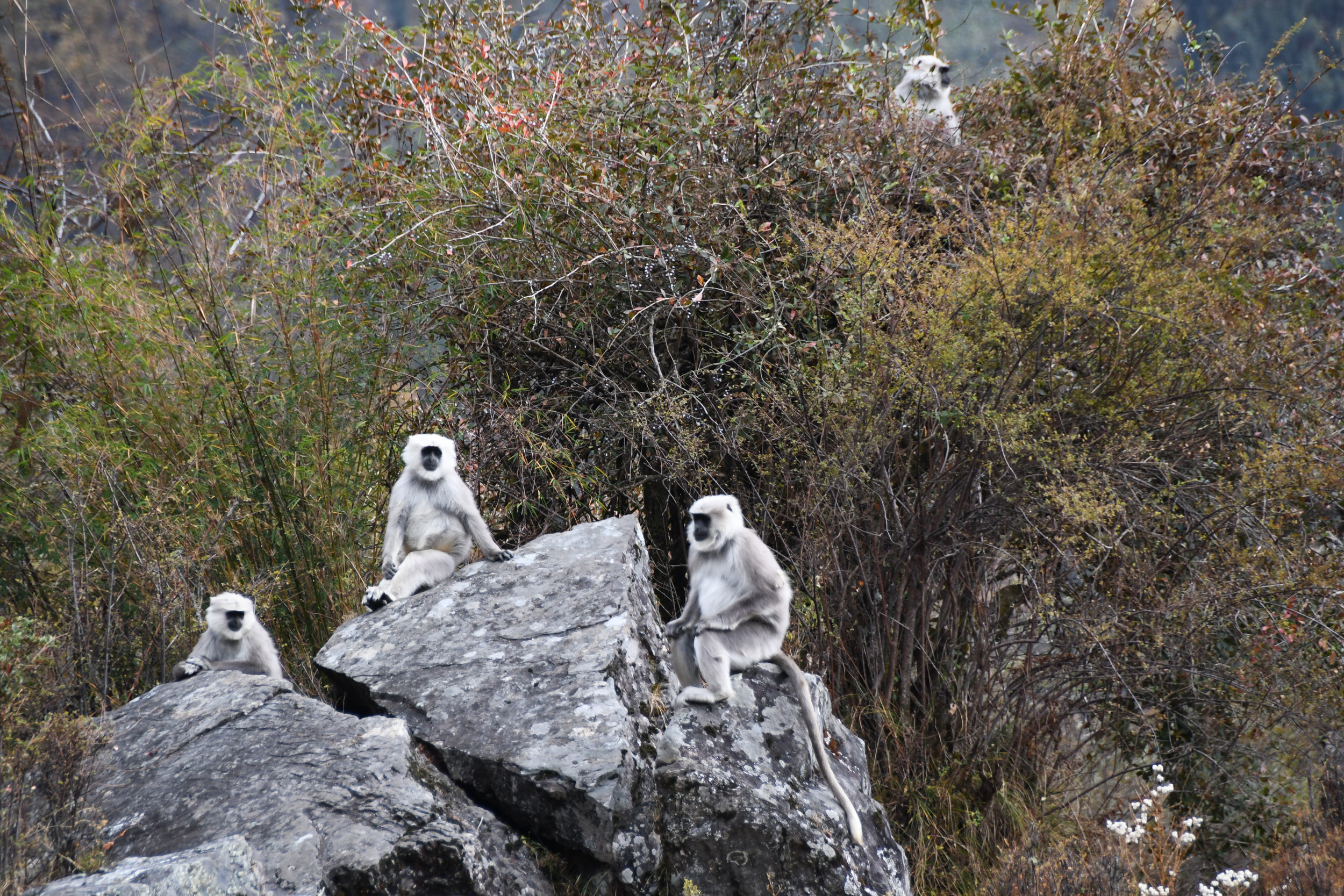
We left the village of Ramni, with profuse namastes to smiling villagers, and walked straight uphill into a sparse forest. The first 2,500 feet of elevation went quickly, and we were standing atop Ramni pass at 10,500 feet. Low-hanging clouds thwarted our views of the tall peaks, but as the day went on the sun broke through and illuminated fallen orange leaves and deep green rhododendrons. I noted how much it felt like New England, crisp leaves crunching under feet and stones lining the trail.
The descent was the most difficult part. 3,300 feet of descent on skis is a dream, but hiking down steep trails excites me, and my knees, less. I sought some morale coaxing by one of our guides, Kiran, who seems ever-zen. He told me the village would surprise me when I least expected it. As we walked along the trail, a villager came up behind us who had just walked the same trail in about a third of the time. He had been visiting neighboring villages to invite everyone to his daughter’s wedding. Marriage is an important rite of passage; it’s custom to have as big and festive of a celebration as possible, and in such small villages even total strangers will walk trails for several hours to attend the celebration. We finally arrived at the village of Jhenji, Kiran shouted “Surprise!" and we were greeted by curious children squeaking out little "namastes" the combination of which made me smile and my legs hurt just a little less.
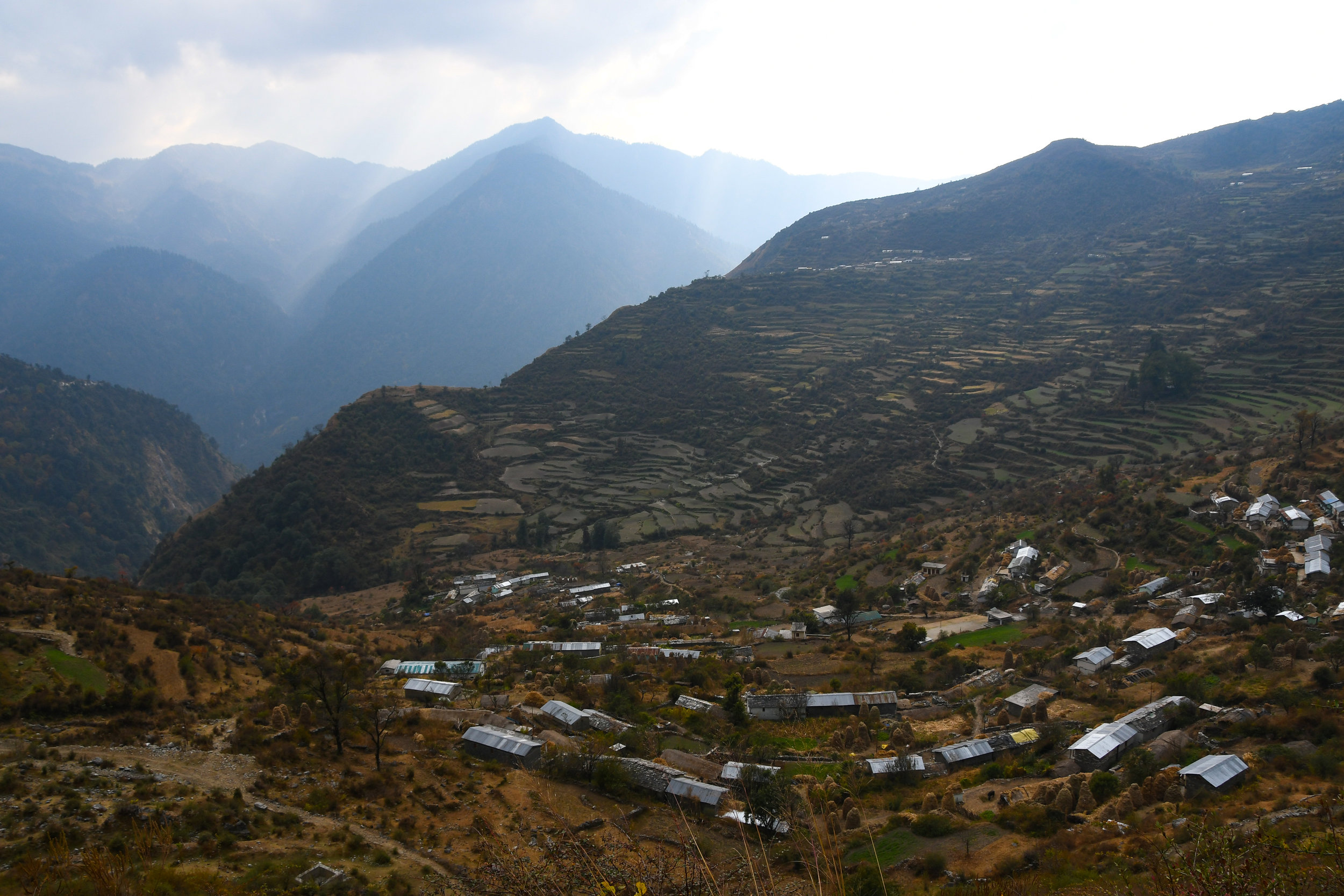
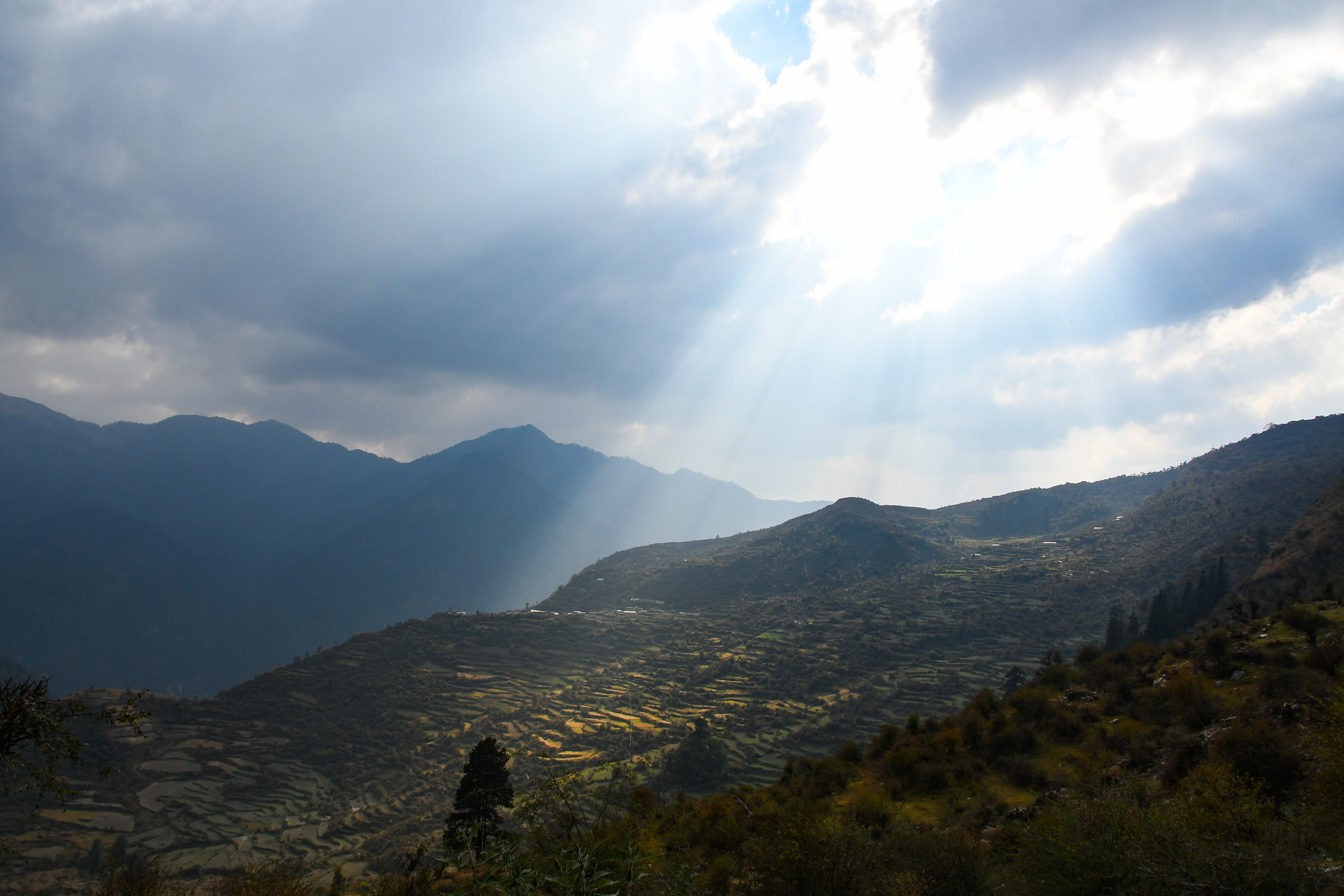
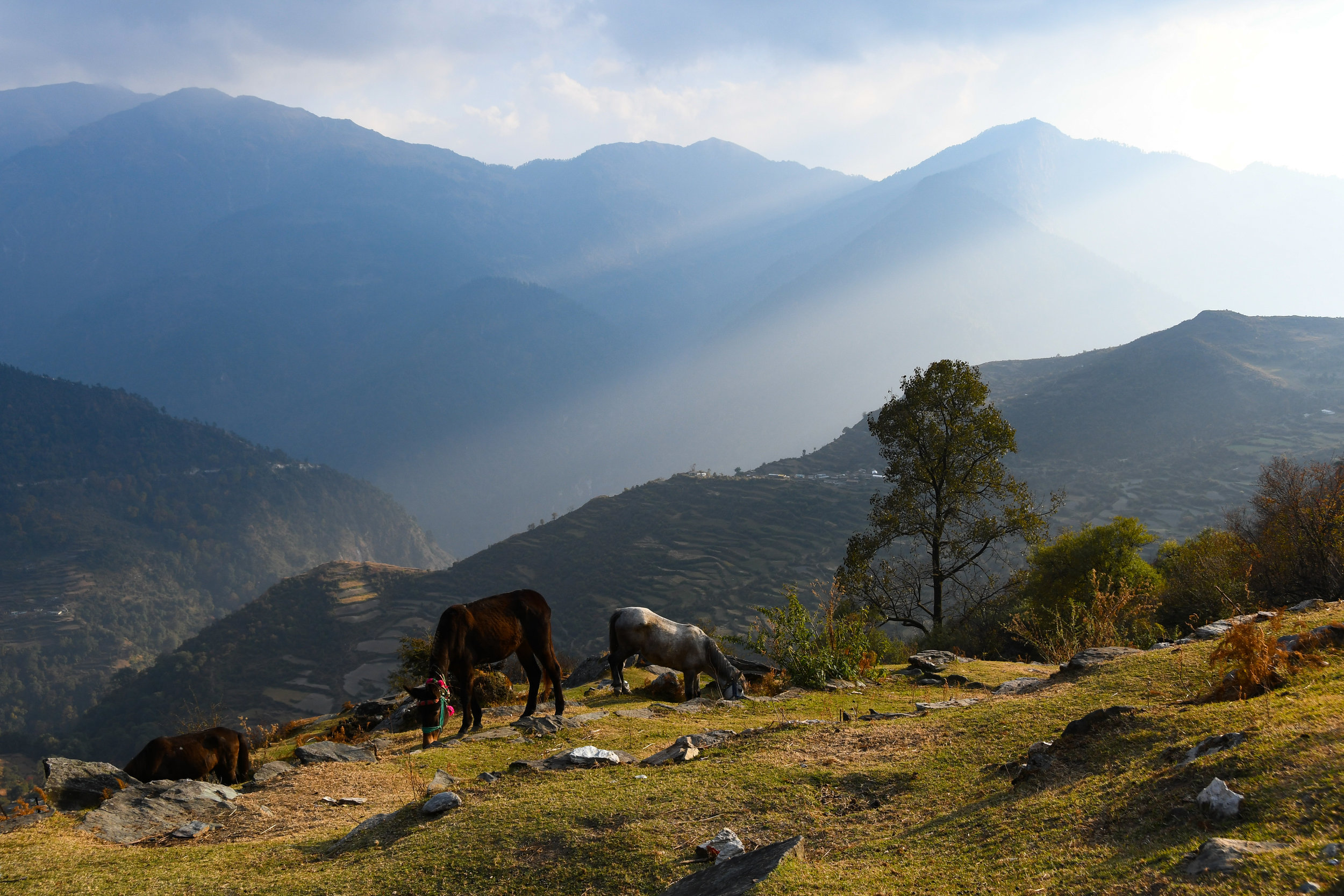
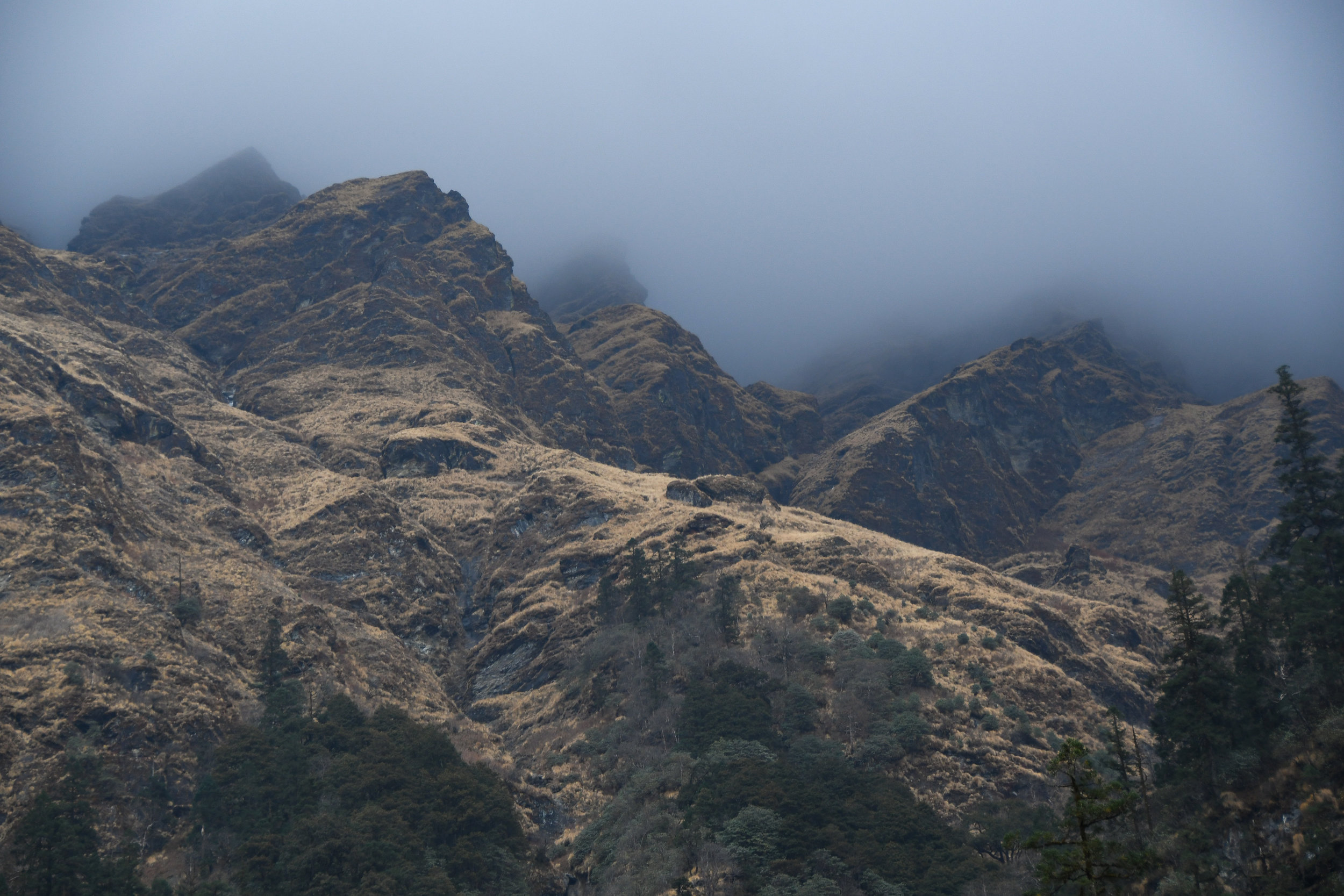
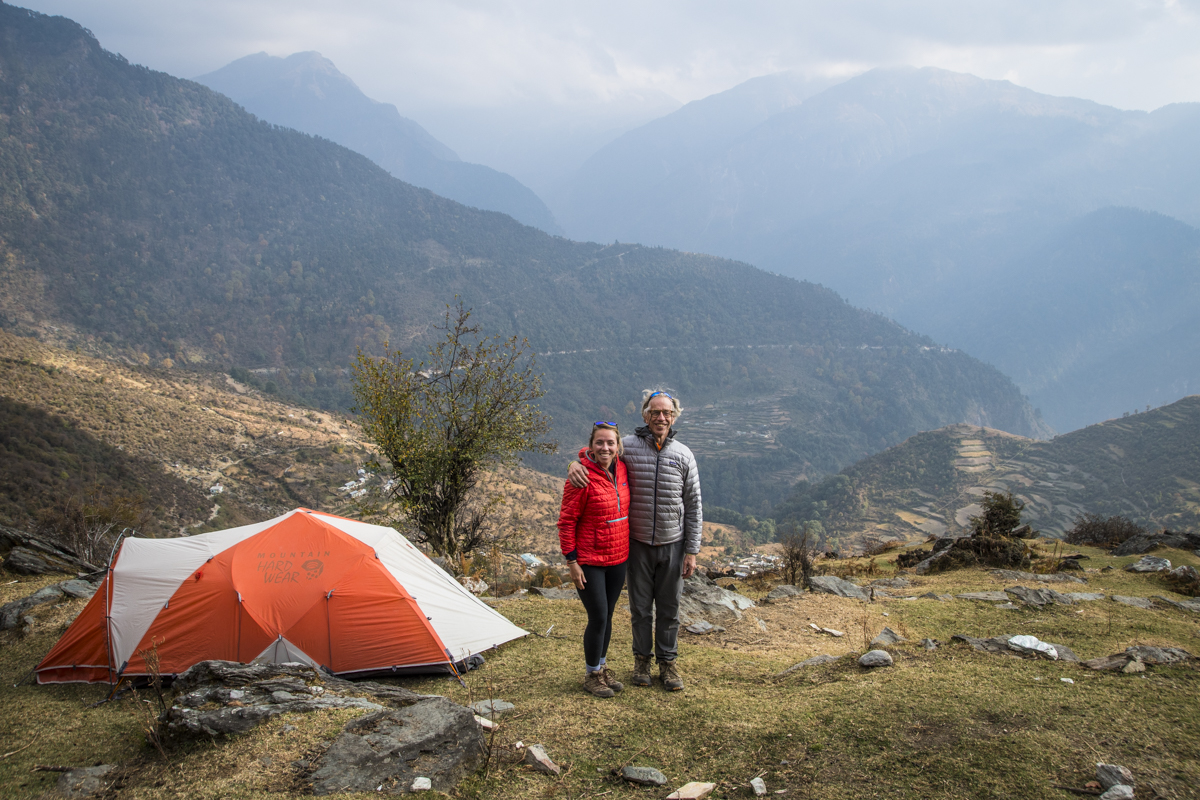
The following day we continued the descent down to the river, a tributary to the Ganges. Crossing a suspension bridge, we looked up at another vertical ascent that lay before us. We followed a road for portions of the trail that had been taken out by landslides in several places. The roads in this province and the entire region are under a perpetual state of maintenance. Walking by house-sized boulders on the side of the road always makes you take an extra glance uphill to make sure another one isn’t coming. This day was the first time that had some flat mountain-skirting, passing shy langur monkeys, water buffalo, and cows. We watched rain move through adjacent valleys and the clouds shift over the mountains. Our campsite was an unbelievable steep perch on rolling mounds of grass, looking over the terraced village of Pana.
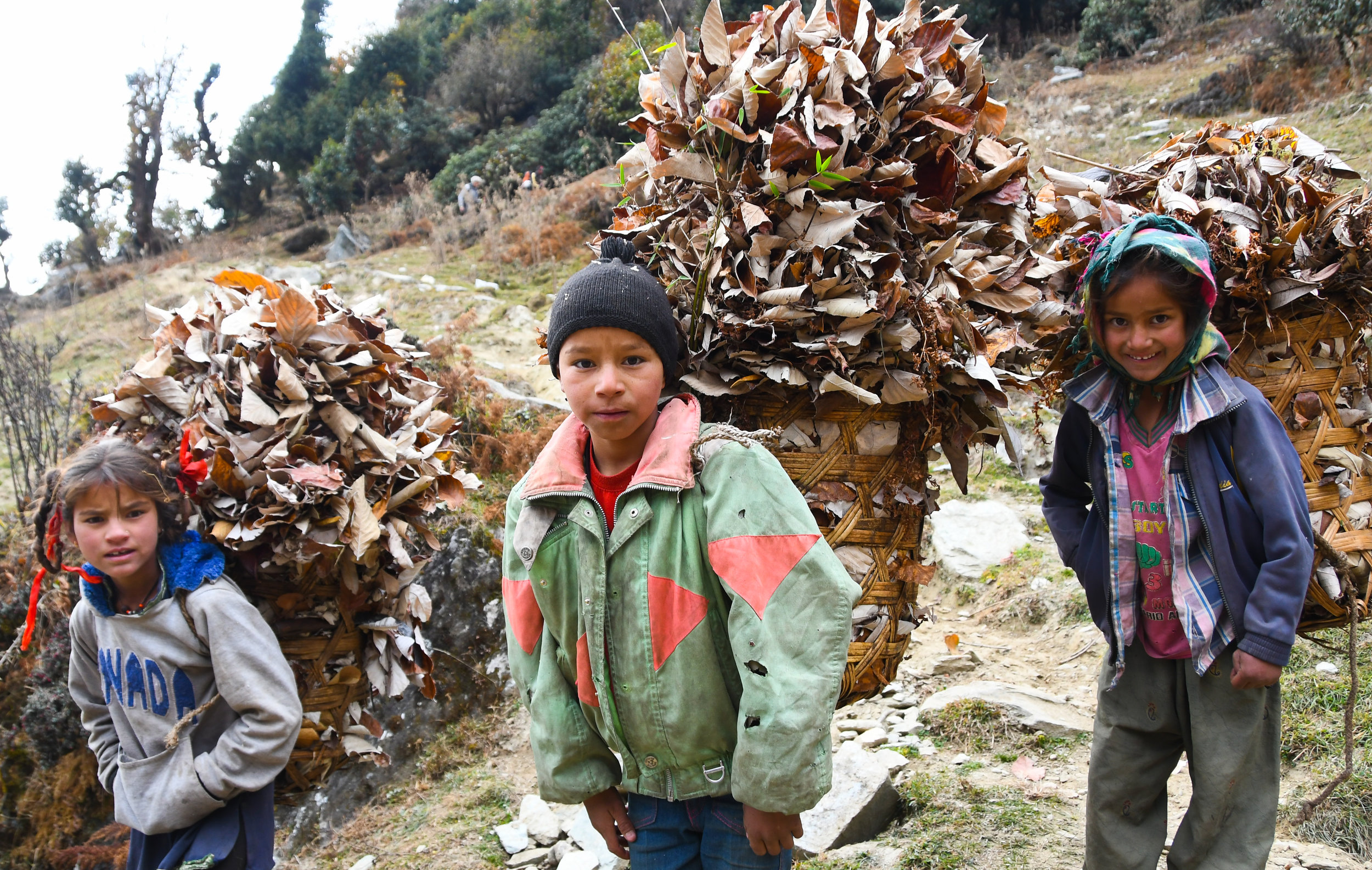
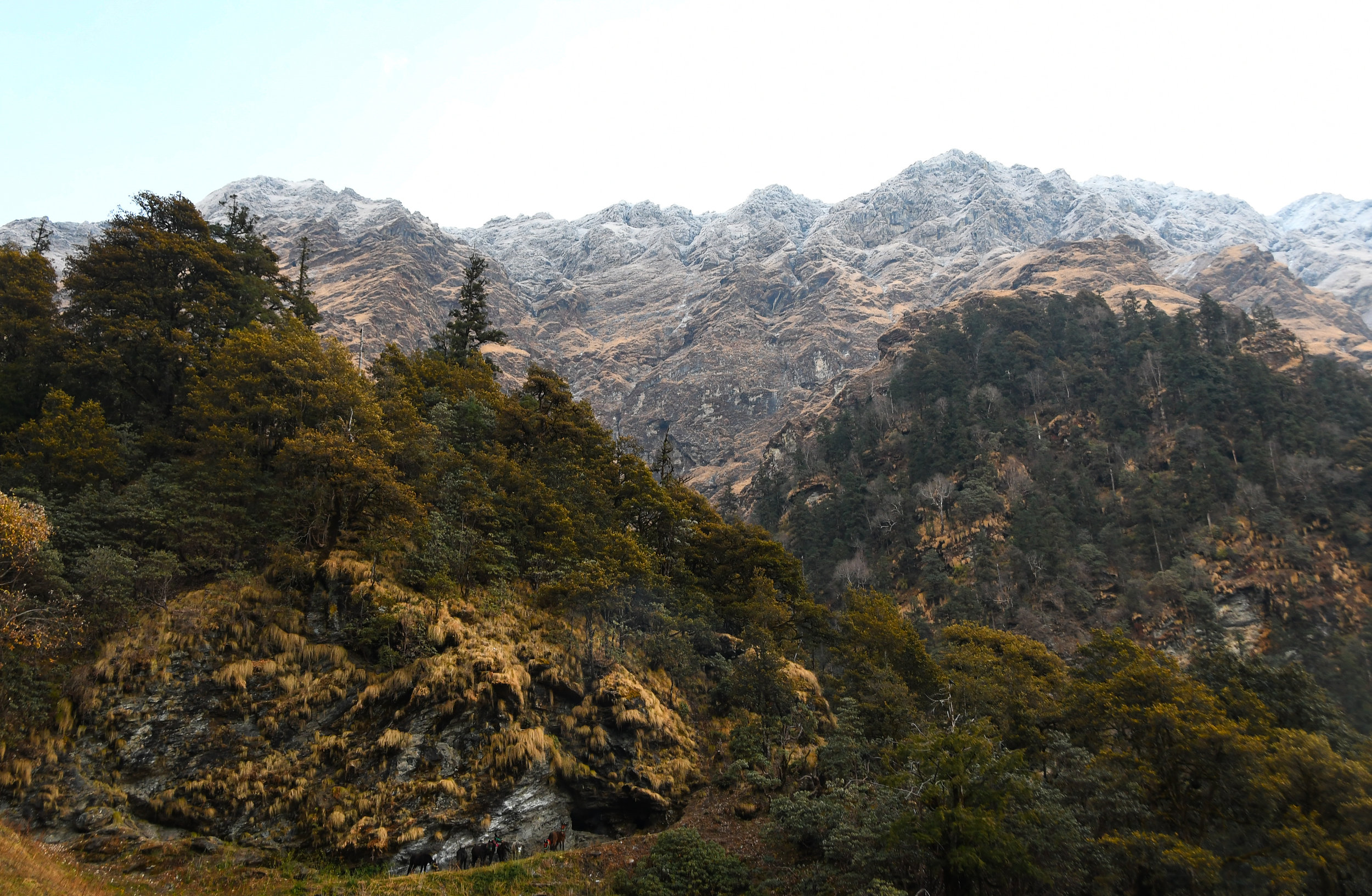
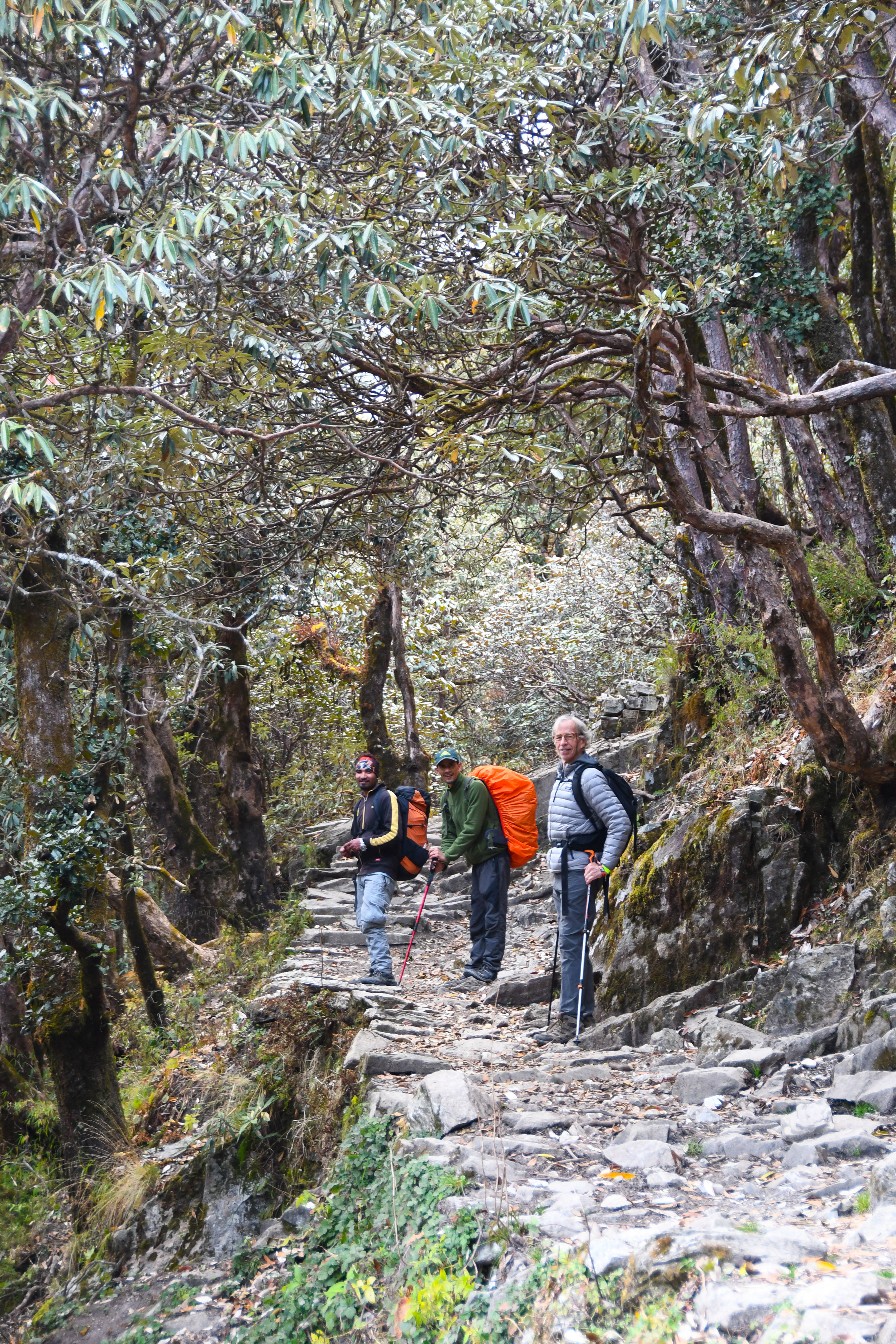
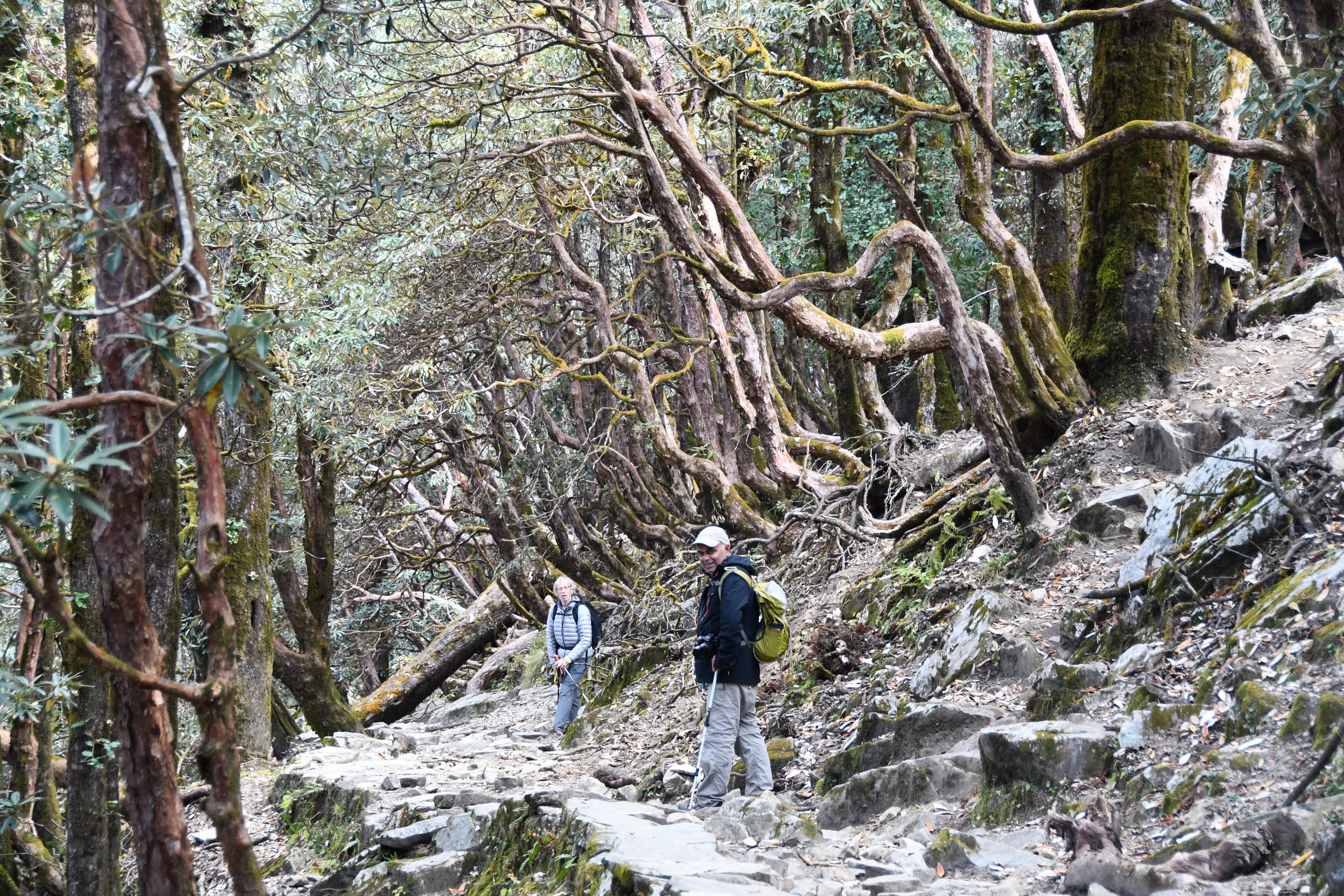

We rose at 6 a.m. to our usual tent-served cup of tea and bowl of hot water for a proper hand and face wash. The sun was still coming up and we saw a family walking uphill, each with a large wicker basket worn like a backpack. At 7:45 as we started uphill, the family was coming down, the baskets stuffed with leaves that would be used for insulation. The young children would do this work and then head home for breakfast before going to school. I had so much respect and admiration for the hard work and commitment to education.
The final destination of our day was just below Kuari Pass. The hike was filled with sights both familiar and new. A big sweeping plain of grass à la Sound of Music, a waterfall tumbling out of a chasm in the side of a mountain and more magical rhododendron forests. Although we still had plenty of both up and down, we were now consistently higher on the sides of the mountains, my eye constantly trailing down to sheer cliffs below. Our campsite was tucked in to the notch we would climb up the next day and had a cave to keep our gear-ponies warm during the night. On arrival it started to snow, and did so on and off all afternoon. The peaks presiding over our site got perfectly dusted and made for beautiful contrast against the golden colors of the hillside.
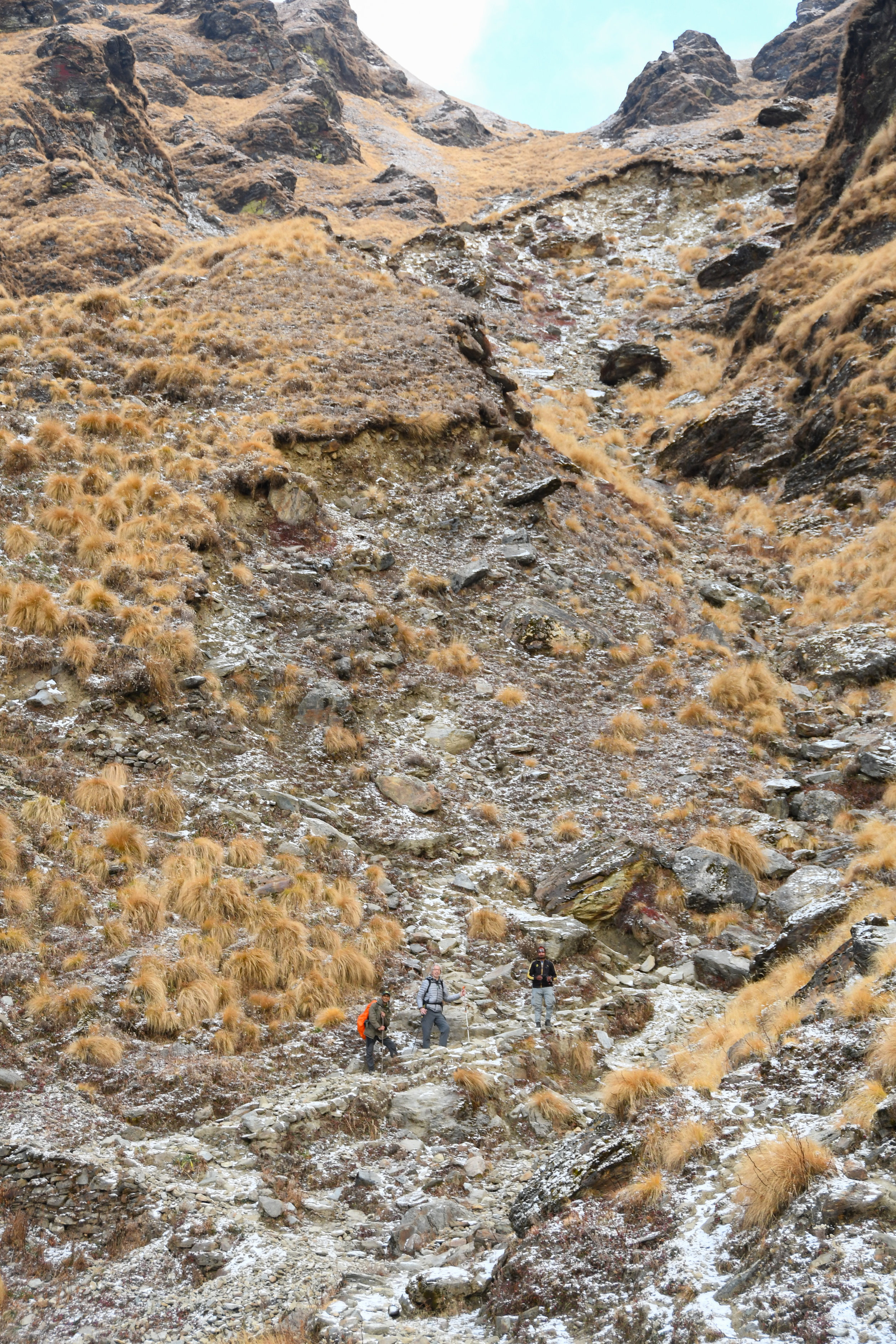
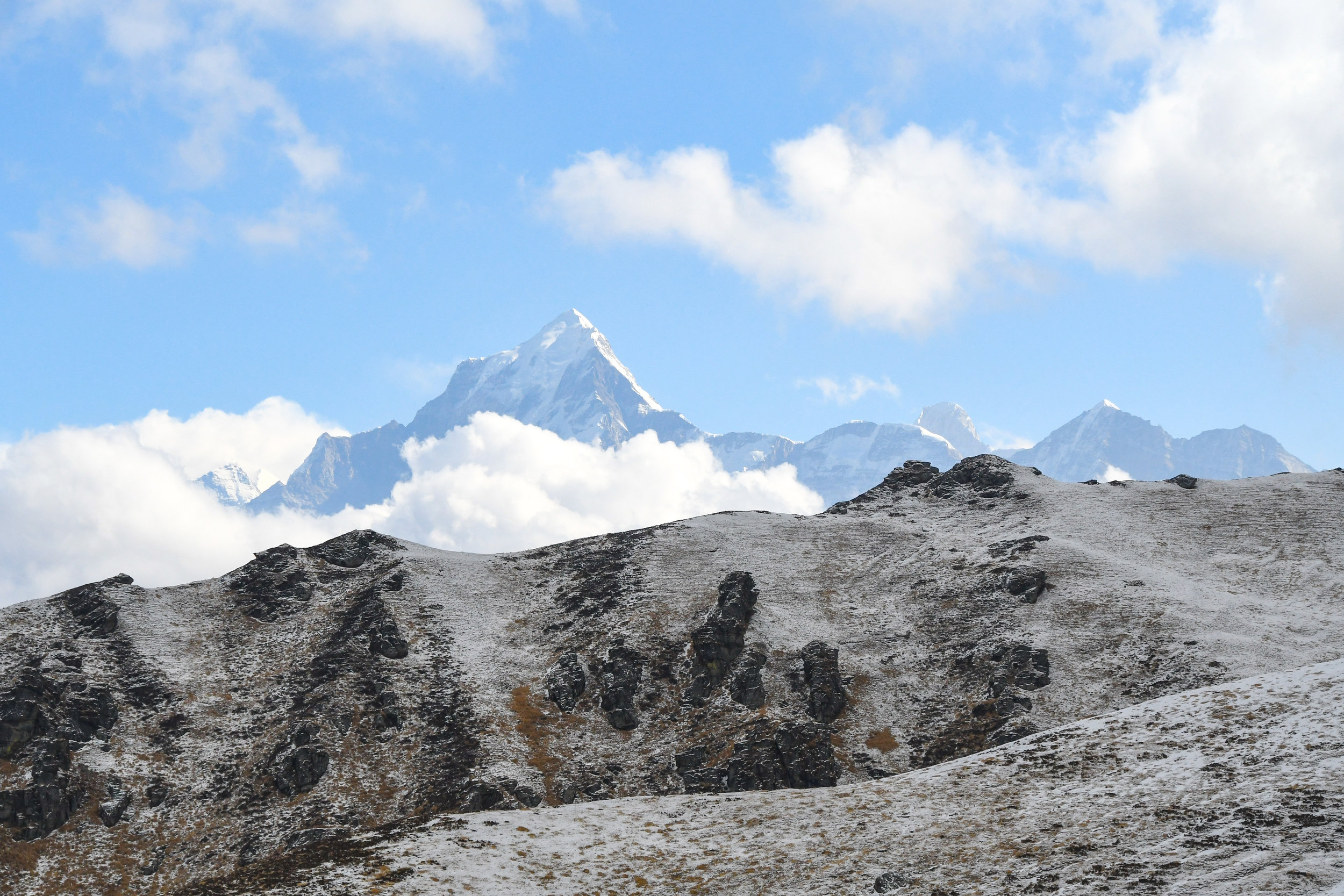
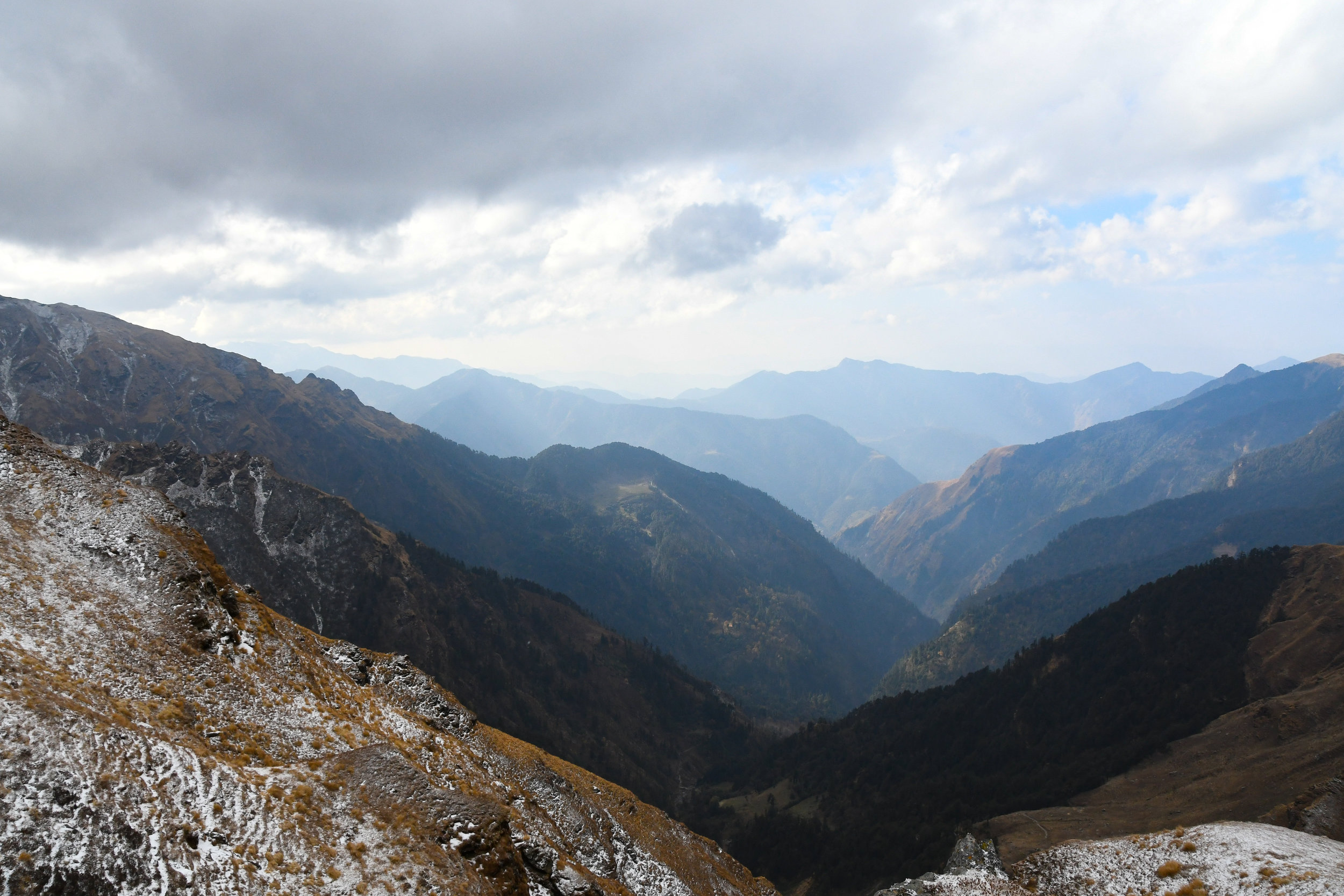
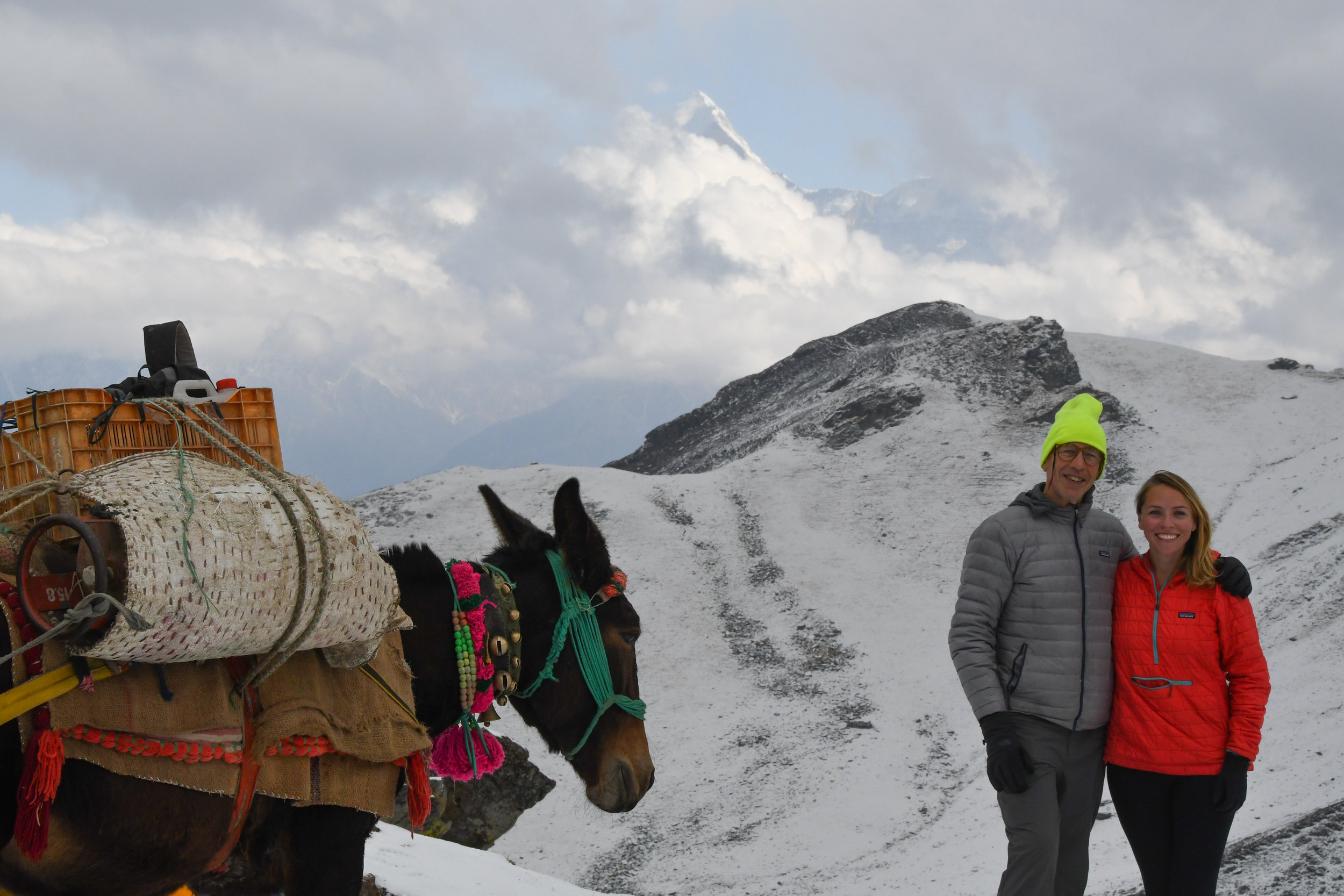
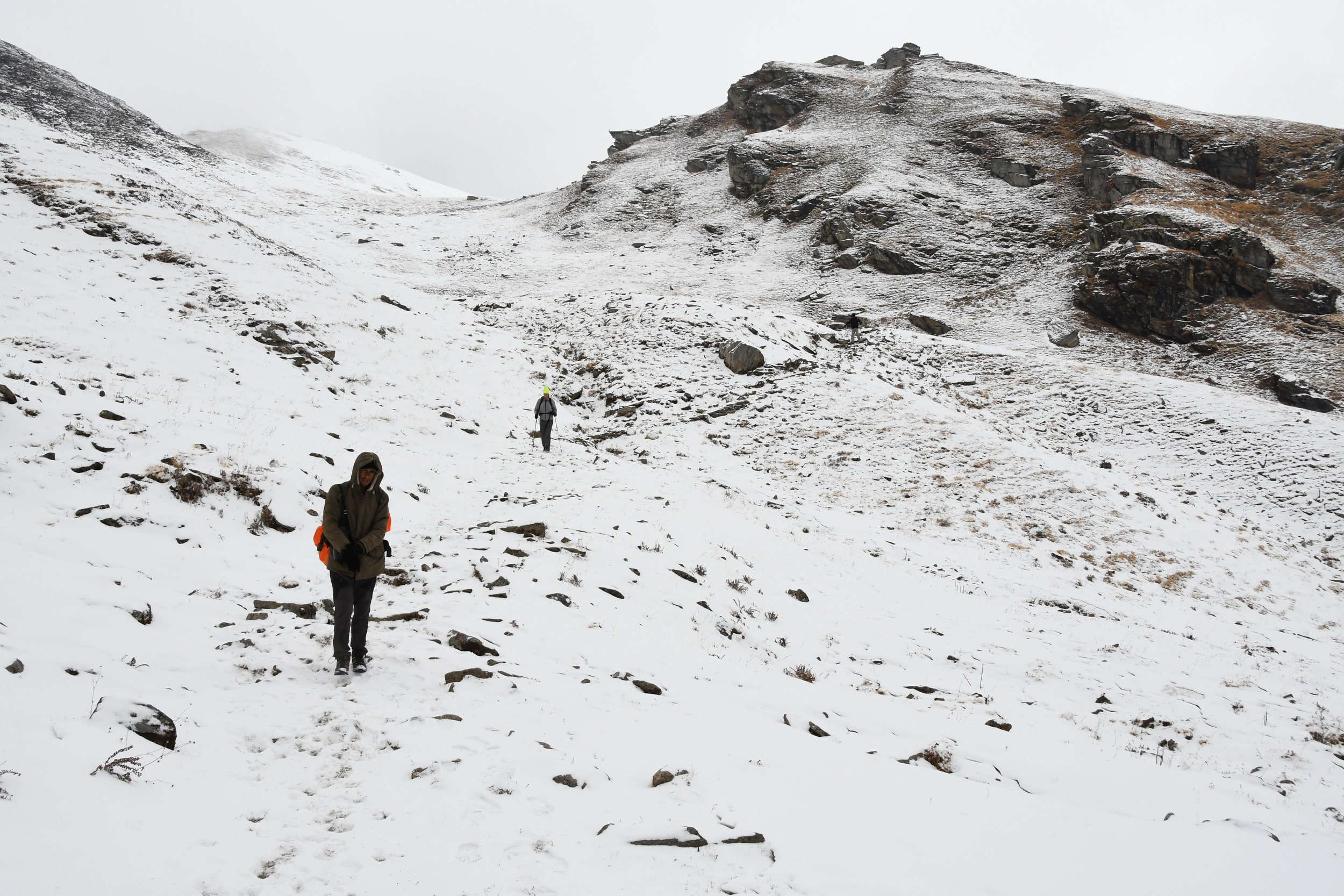
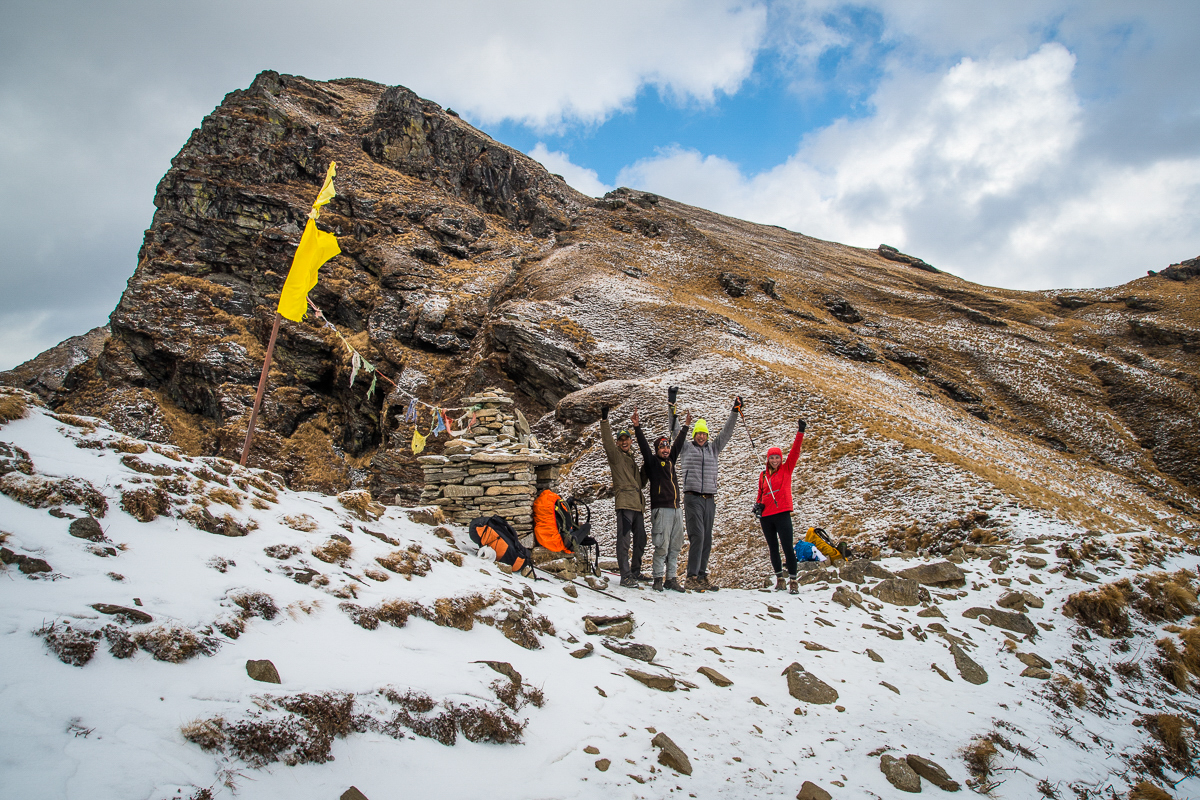
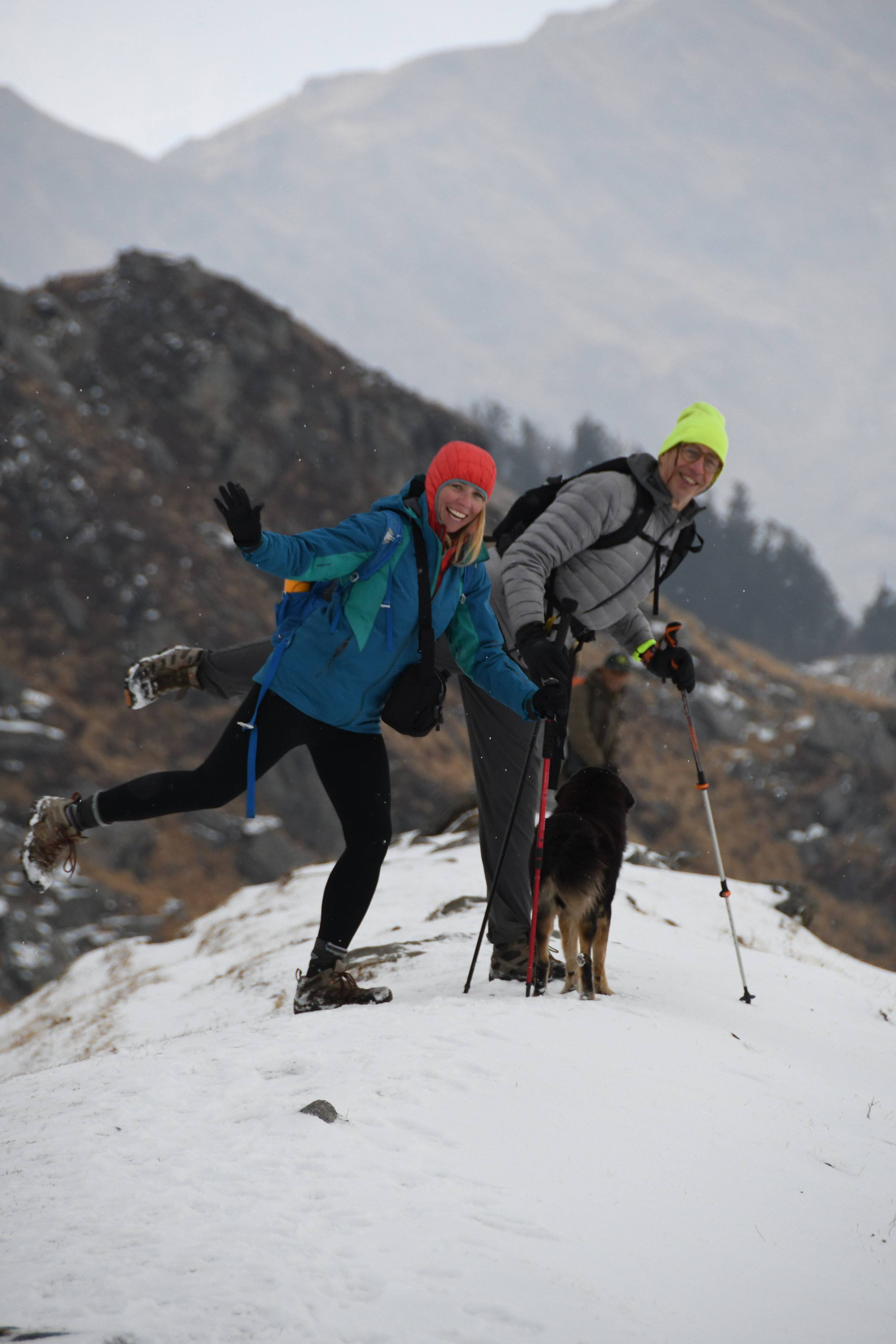
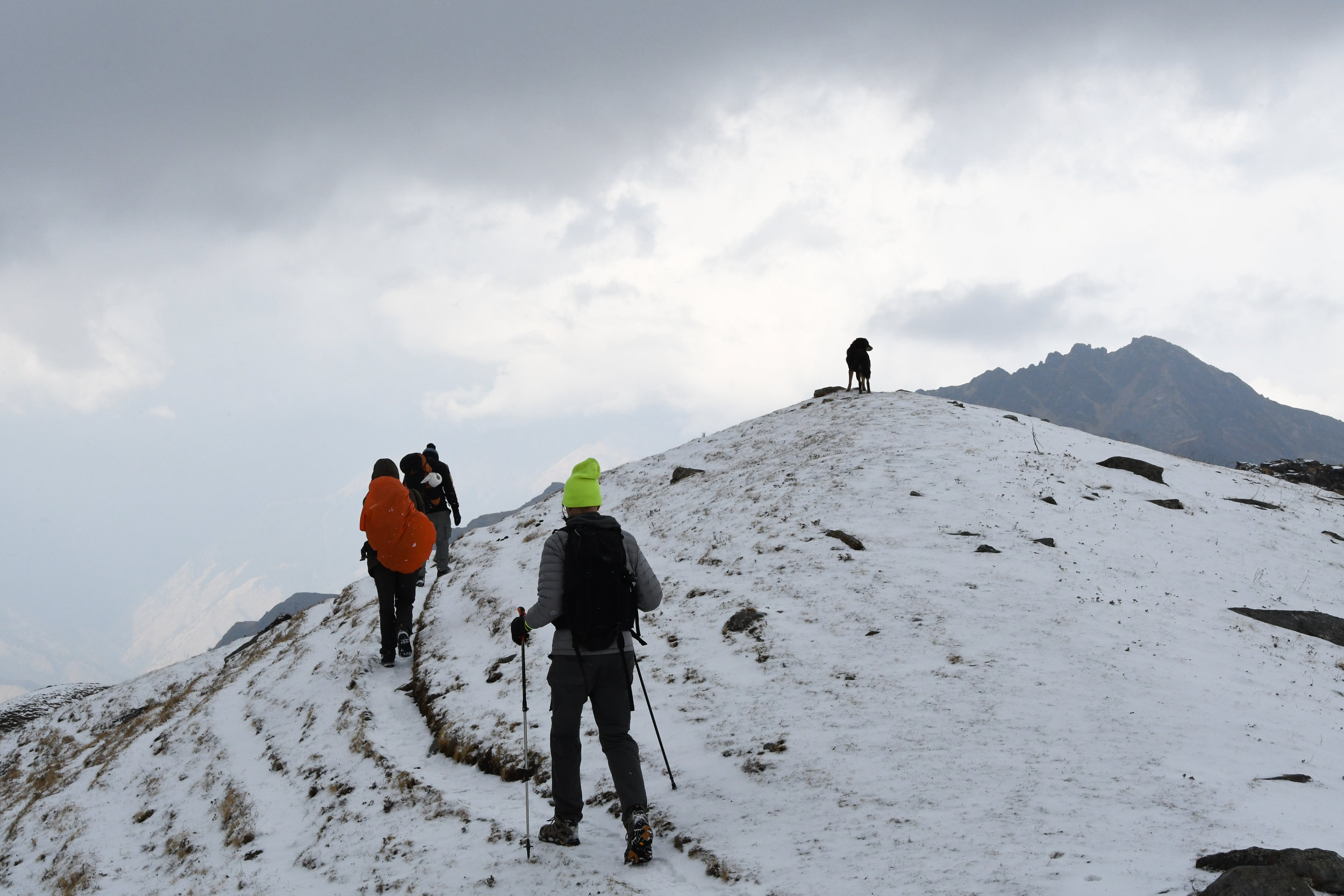
We had been keeping our fingers crossed that the weather that had sat on top of us dropping snow would lift for our crossing of Kuari Pass. 2,500 feet of mostly switchback trail separated us from the top of the pass at 13,500 feet. As we crossed an open area, we noticed a huge flock of Monal birds, a rare Himalayan species that are extremely colorful, with the stature of a pheasant and generally very difficult to see. We stood for a while and looked at 25 of them pecking around the ground, unconcerned with us. We crested the pass to see a whole new world unfold in front of us, huge craggy peaks of barren rock and glacier and rolling fields of snow. The clouds were moving in fast, but not before we could behold the dramatic knife edge line of Dronagiri (23,182') sitting atop the clouds. To have gone so quickly from the protected forest still so full of greenery and plant life to the cold and barren snowscape was breathtaking and exhilarating and a dose of true cold. It felt strange to be only ~1,000' feet lower than I was atop Mount Whitney, as the perspective of the peaks around us made it look like the pass was merely a knoll for a pleasant picnic or something equally as fair-weather. The ensuing hike took us through several inches of fresh snow, over frozen streams and along a ridgeline before we made it to our resting spot for the night in the middle of an oak grove.
The afternoon quickly became dramatic as snow poured from the sky and great earth-shaking claps of thunder rang out and lightning flashed. It was unrelenting and utterly beautiful, coating the rhododendrons and bearded moss swaying from the boughs. The snow was strangely light and dry coming down in large pellets that would squeak under your shoes as you walked.

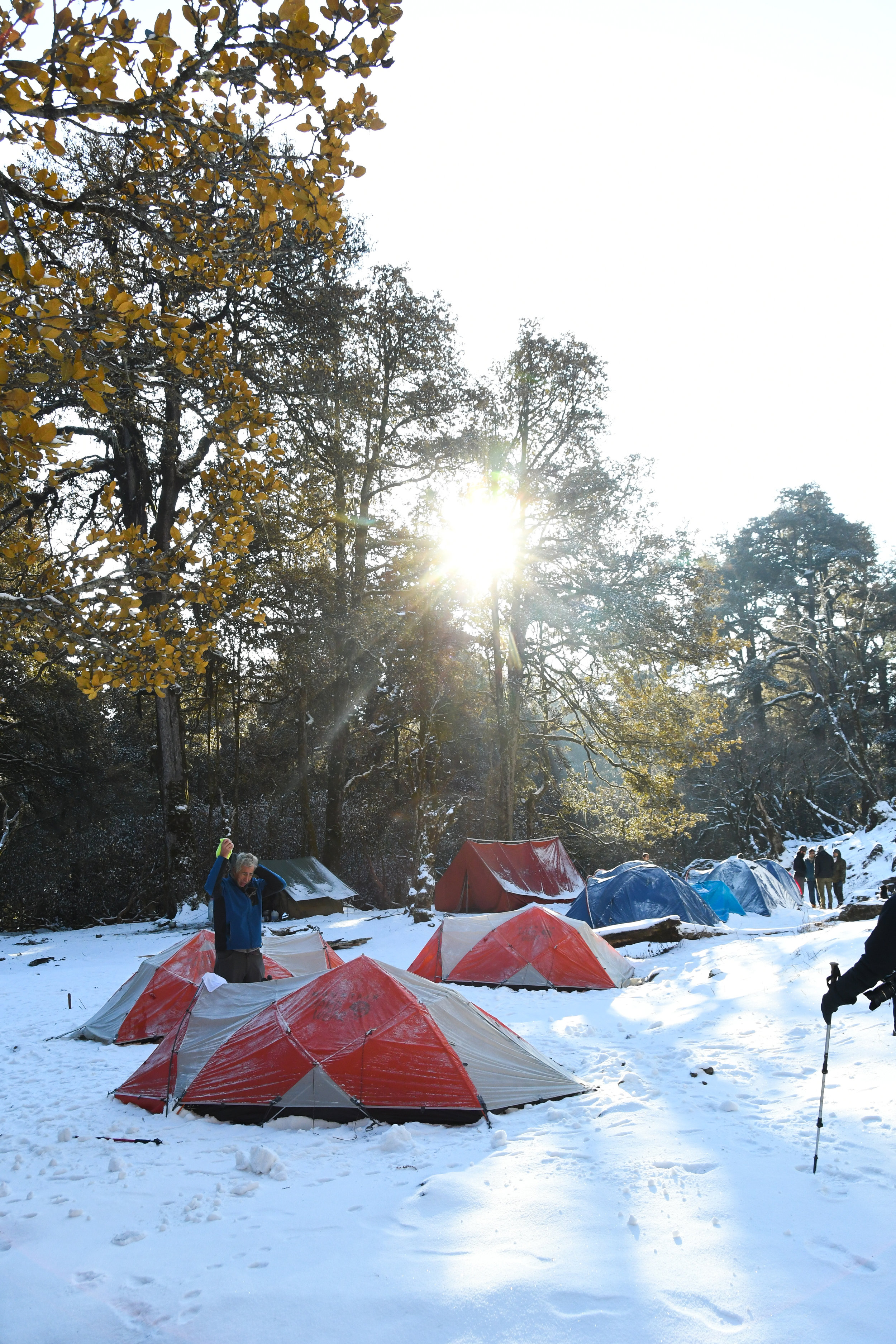
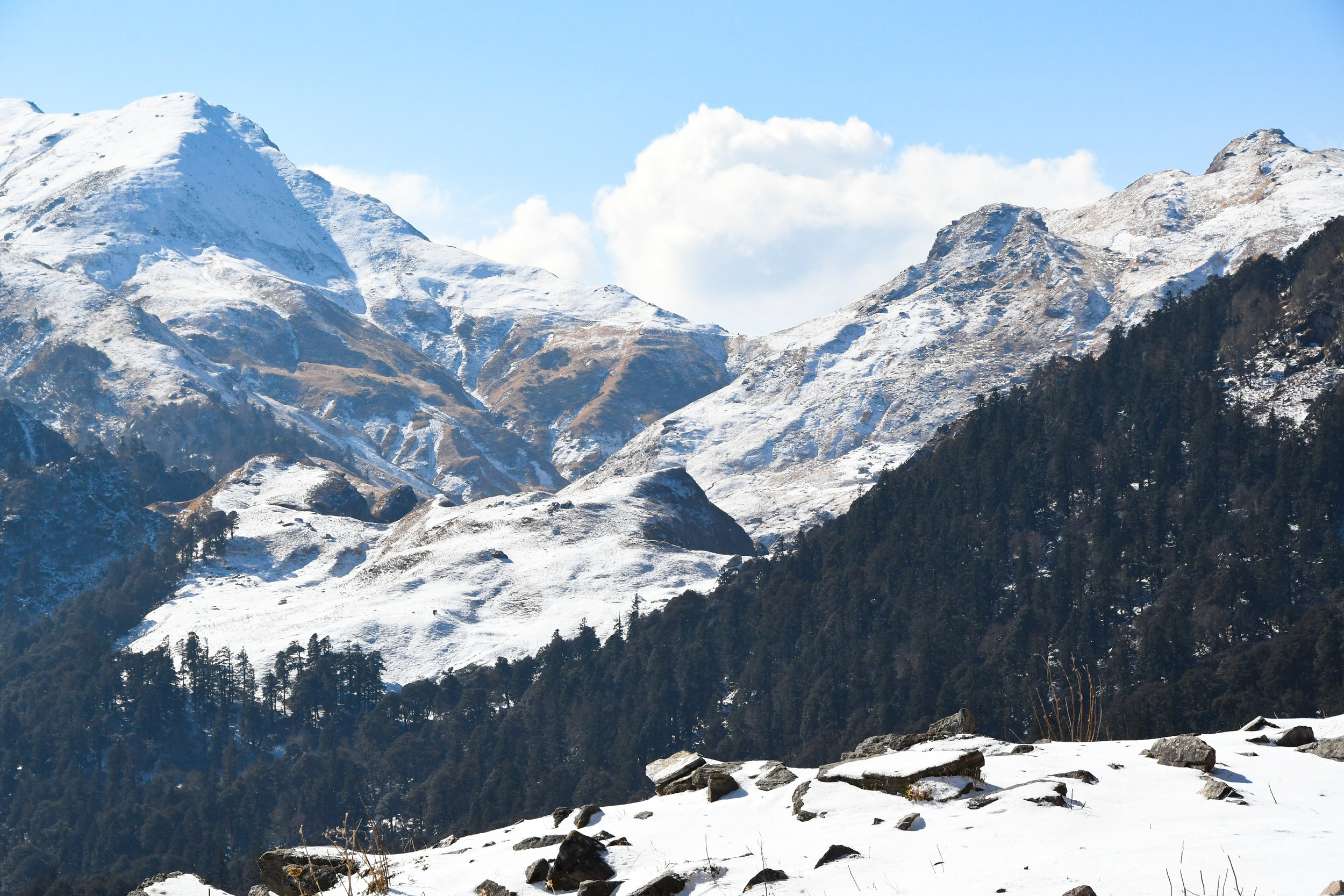
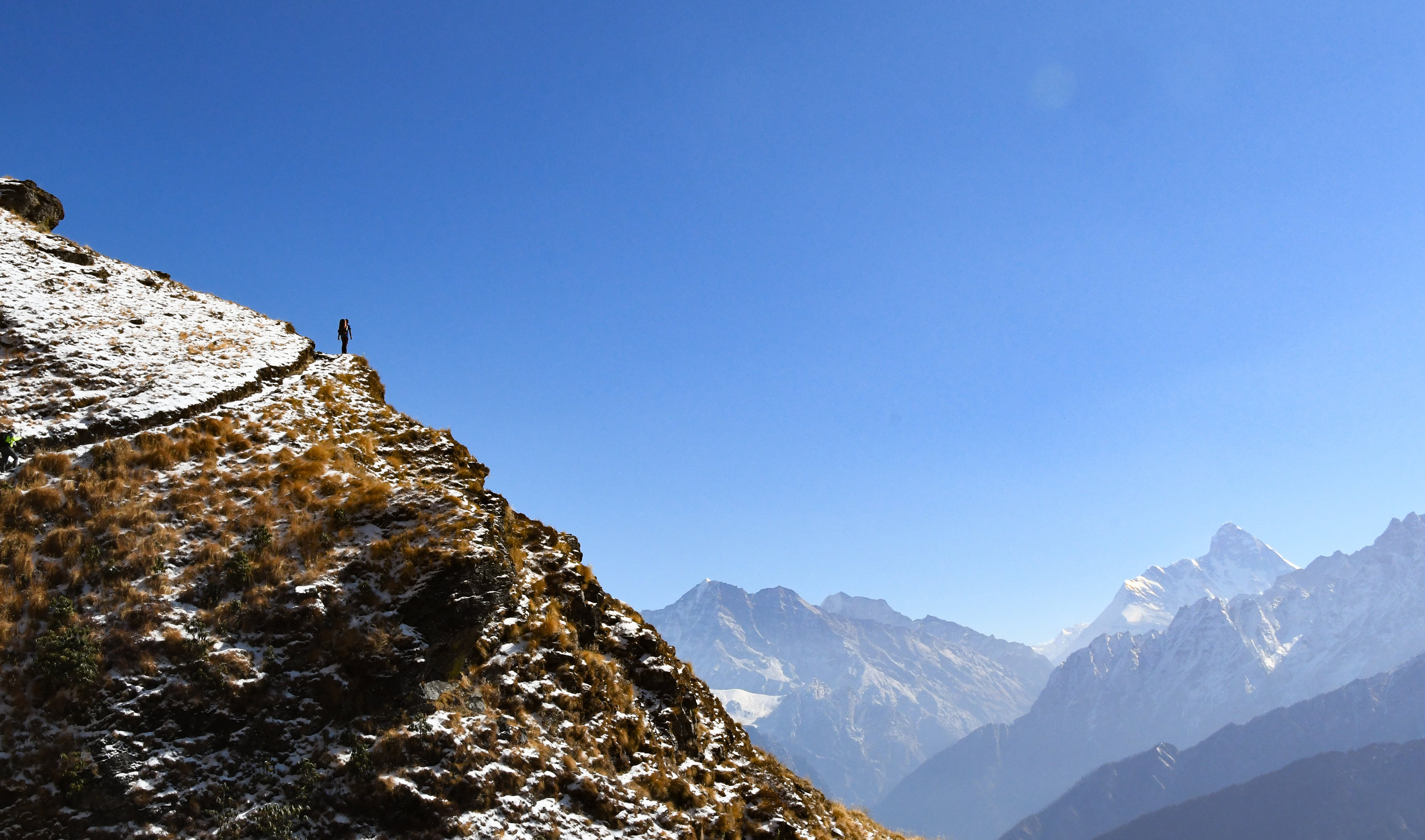
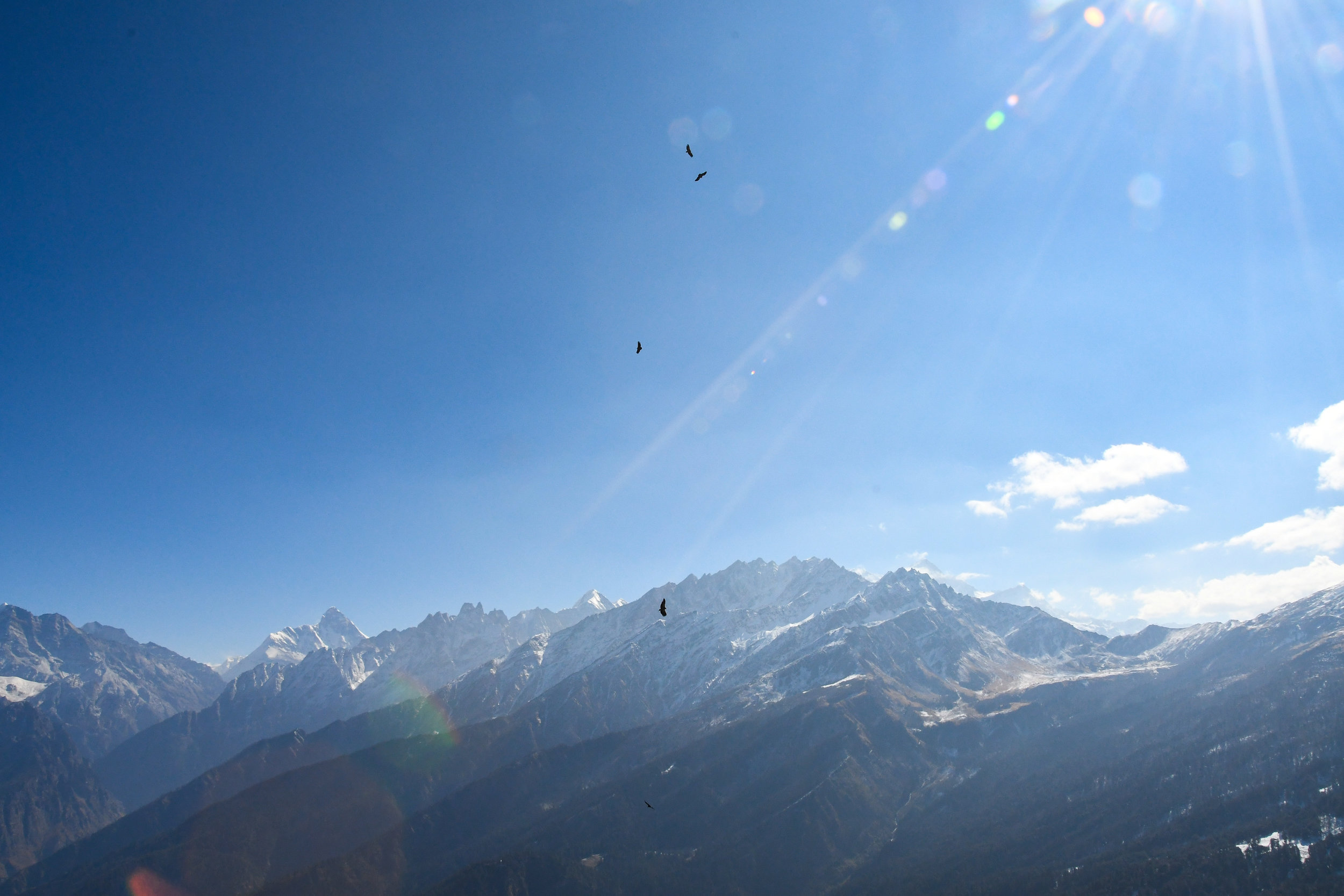
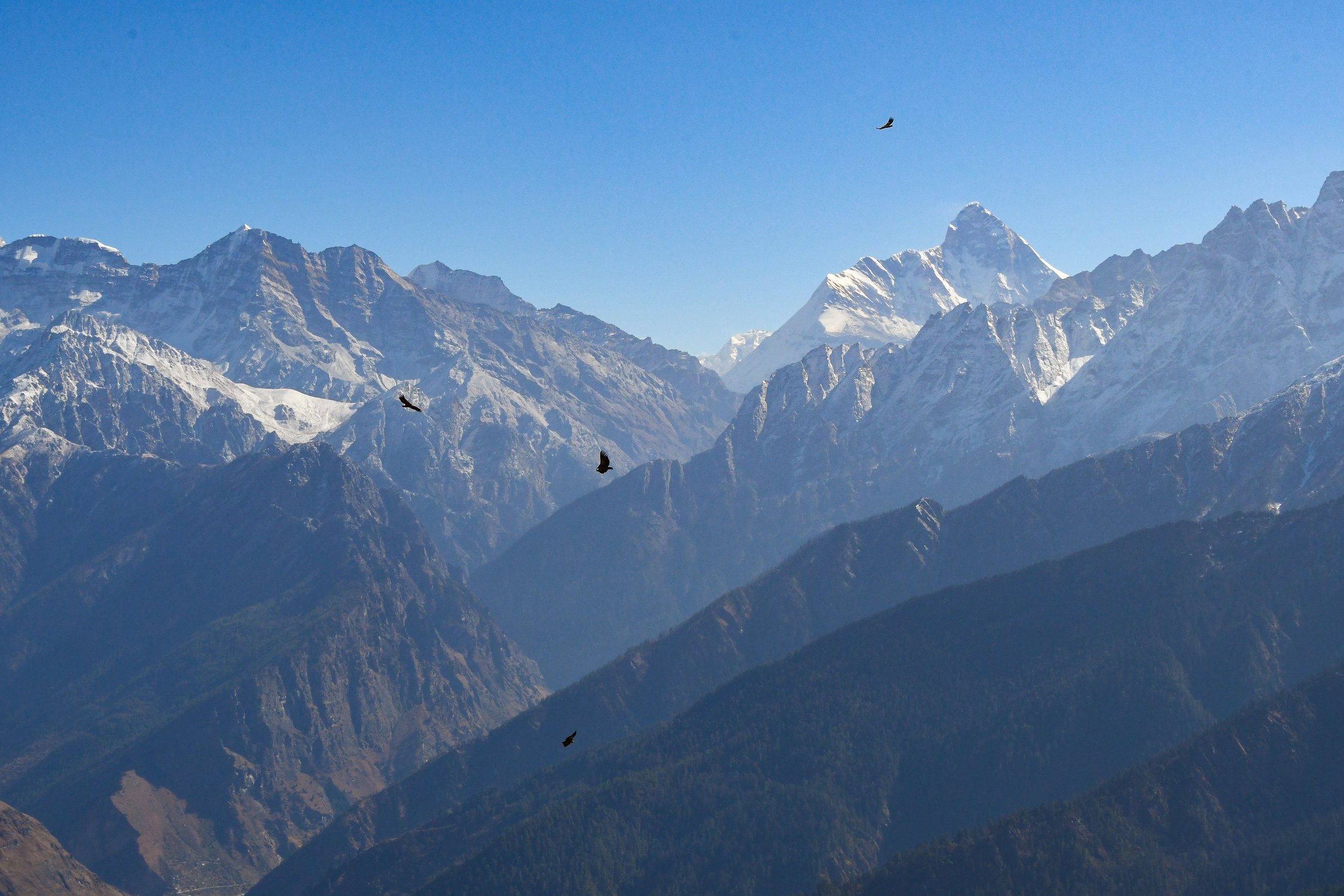
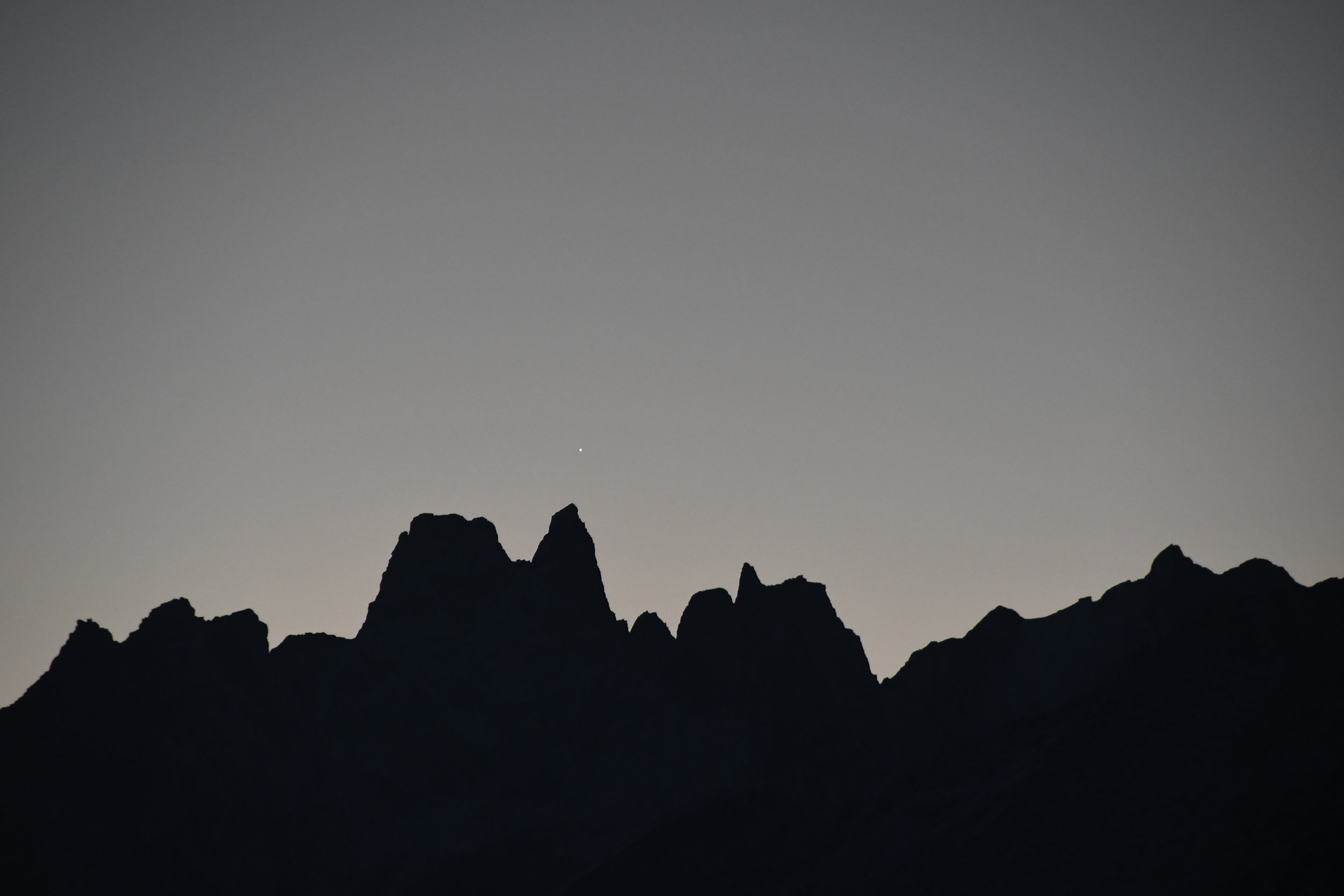
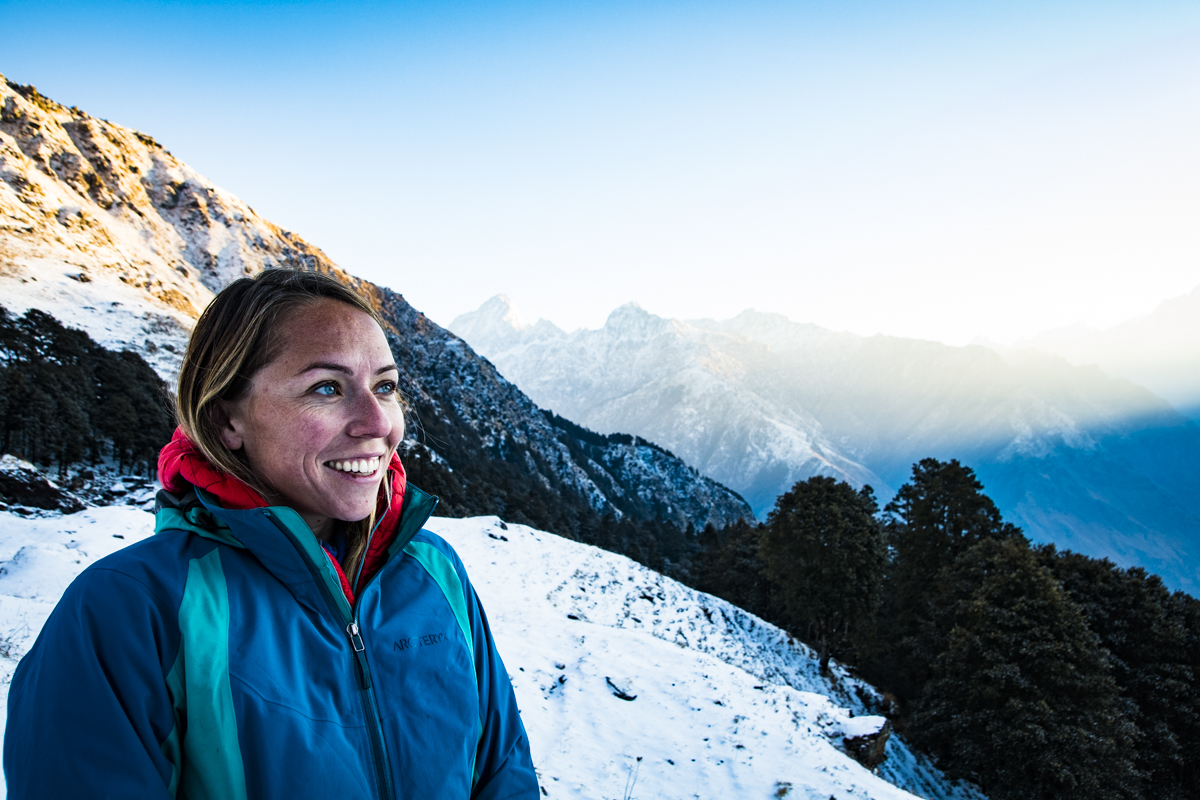
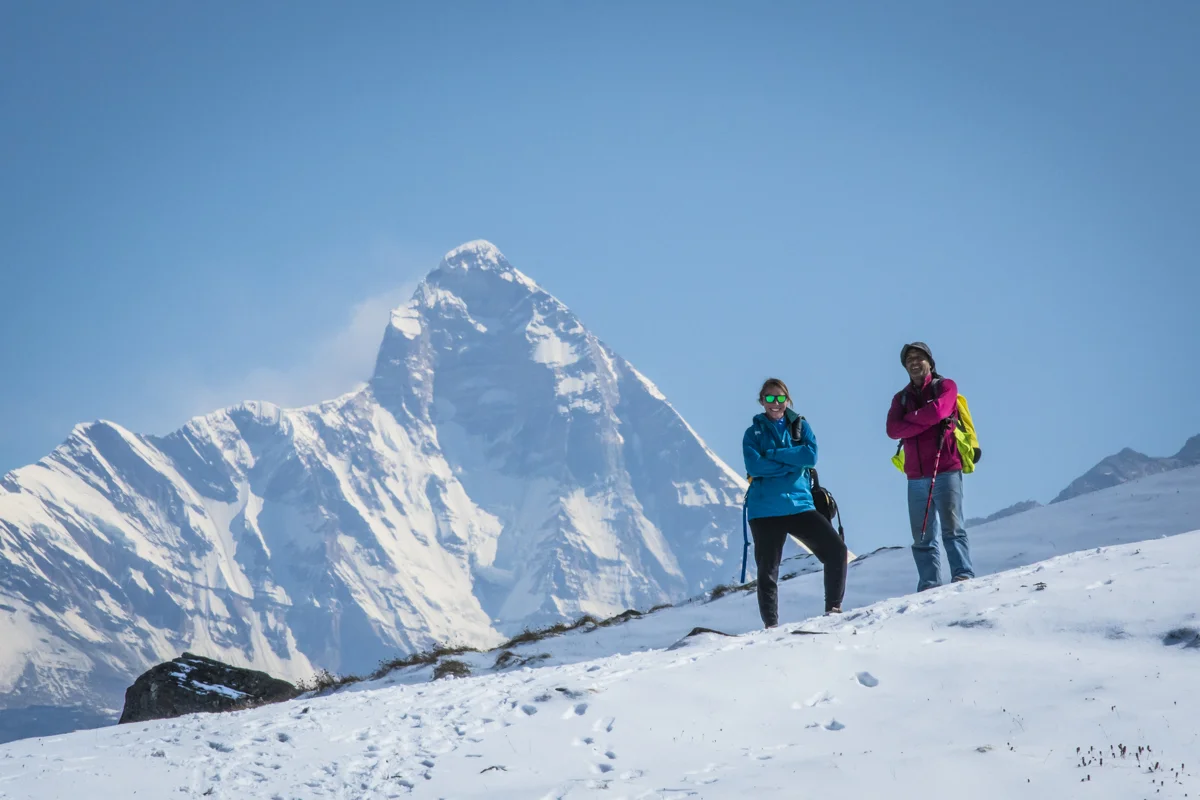
At 6 a.m. we went tromping through the snow in the clear cold of the morning to an opening where we would get a full display of Himalayan sunrise. The perfectly clear sky was a gradient of blue that shifted slowly as the sun made its way from behind Nanda Devi, the light fracturing over her flanks making geometry of the sky. Our hike was an exhibition of natural grandeur–skirting narrow paths with a 270-degree view of snow-laden peaks, watching seven or eight lammergeiers ride thermals into the atmosphere, gliding effortlessly in the swirls of air, never batting a wing. We could still see Kuari Pass behind us, its crest showing some golden grass beneath a dusting of snow. Hypnotized by Nanda Devi, Dronagiri and the array of mountains all around made it hard to move very quickly, knowing that the trek would soon end. After several more hours of hiking we got to our end point, the ski resort Auli, where we would take the gondola down the final 3,000 feet to Joshimath and the real world.
It was hard to say goodbye to our team. There had been four men managing the ponies, the “egg man” who carried the eggs, Moti Sherpa our cook, Deshraj, Kiran, and Pushkar. Along with our fellow trekker, Manoj, they filled the week with stories of these mountains and the gods that exist within them and kept us going with their unwavering steadiness and cups of chai. Hopefully we will meet again in the mountains.
Left to right: Pushkar, Manoj, DeshRaj and Moti Sherpa


